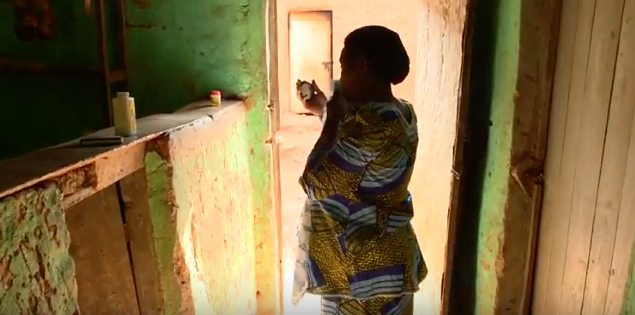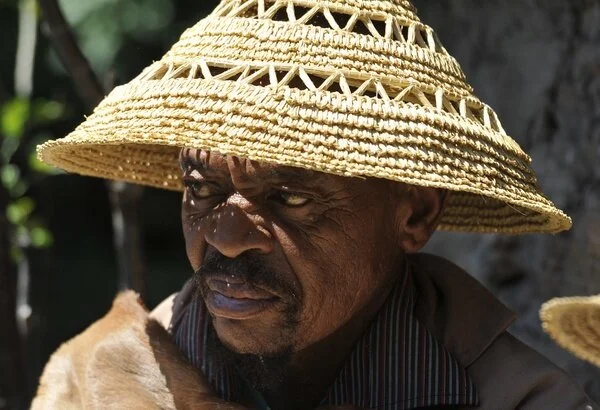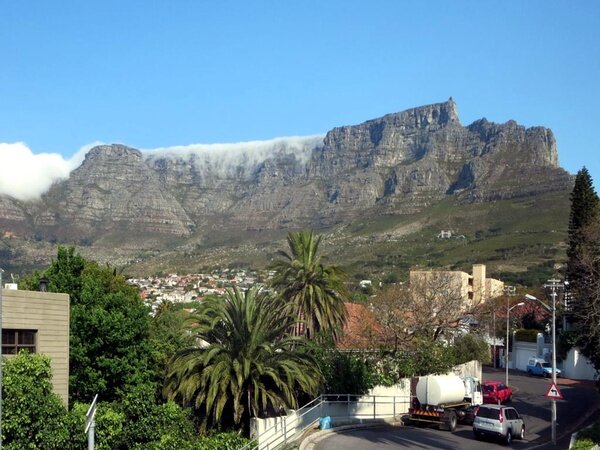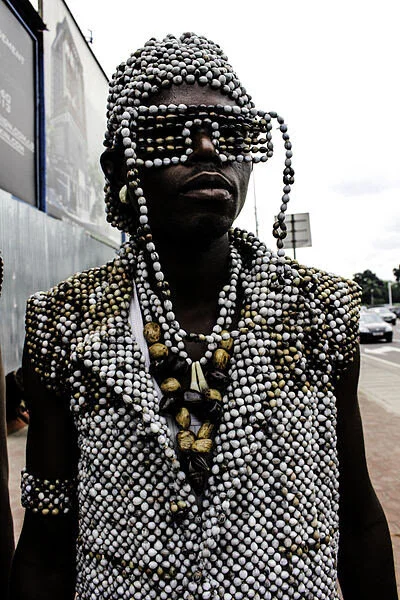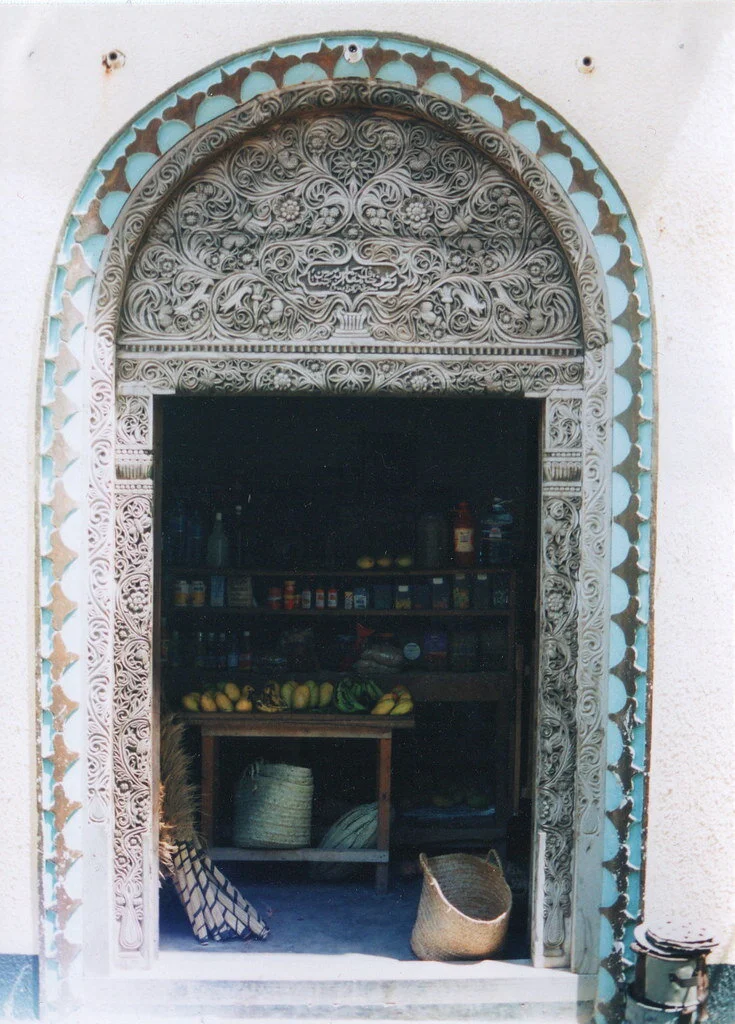Located at the converging point between the African Great Lakes region and East Africa, the Republic of Rwanda is an environmentally, economically and culturally diverse country rebuilding its identity in the wake of the 1994 Rwandan genocide, in which approximately 800,000 Tutsis were killed by Hutu extremists. The country takes pride in its regional fauna, which includes elephants, gorillas, hippos, giraffes and zebras. Travelers interested in viewing Rwandan wildlife can observe it in three national parks: Volcanoes National Park, Nyungwe Forest National Park and Akagera National Park. “Mama Rwanda” also shows Kigali, the capital of Rwanda and the heart of its economic and cultural life. The city boasts a vibrant marketplace and architecture that combines traditional and modern styles. Outside the city, Rwanda’s expansive coffee growing fields are tended by over 450,000 planters. Basket weaving has been an important aspect of Rwandan culture for centuries and is now being used by women impacted by the Rwandan genocide to pursue greater economic independence as producers within an international market. Hutu and Tutsi women have come together to weave baskets, a practice that is now a symbol of national reconciliation. These businesses sell their wares to both small stores and large department stores like Macy’s. The profits of weaving companies are often used to support Rwandan families in need of food and medicine.
Aerial view of Ambalandingana, a village in the Amoron’i Mania region of Madagascar. Bernard Gagnon. CC BY-SA 3.0.
8 Only-in-Madagascar Experiences
You may know about lemurs and baobabs, but here are more amazing and unique cultural and wildlife experiences that the island nation of Madagascar has to offer.
Sand Mining Threatens Coastline as Sierra Leone Rebuilds
Within a few miles of Sierra Leone’s capital, sand mining is having a devastating effect. As beaches slowly disappear, so do the country’s hopes of post-war revival.
Freetown Beach in Sierra Leone, Erik Cleves Kristensen, CC BY 2.0
Twenty years after Sierra Leone's 11-year civil war, the economic promises of sand mining prove to be costly. The war, which took thousands of lives and led nearly half the country's population into poverty, destroyed most of the country. What followed was a construction boom made possible by an essential ingredient of modern civilization: sand. However, as Sierra Leone’s 300 miles of glorious beaches slowly disappear, so does the revival of tourism and the protection of 55% of the population who live along the country’s coast from the dangers of rising sea levels due to climate change.
As part of a post-civil war move to help communities benefit from local resources, Sierra Leone’s central government gave regulation of sand mining to local councils. Under the 2004 Local Government Act, local committees operate the trucks and strictly hire local people to mine the sand. After a long day of mining, the sand is dried and sold to developers to pave and extend roads as new homes, hotels and restaurants go up across the country.
Government officials defend sand mining as an essential source of jobs and a necessary component in rebuilding Sierra Leone. Kasho Cole, chairman of the Western Area Rural District Council, told the Los Angeles Times that his council is “sensitive to environmental concerns, having banned sand mining on certain beaches because of the devastation it has already caused.”
Cole also acknowledged that assessments had not been carried out anywhere in the district to determine sand mining’s environmental impact. Due to large-scale illegal sand mining operations, Cole could not provide a definite amount of sand extracted from the beaches.
Sand theft, the unauthorized and illegal form of sand mining, has led to a worldwide non-renewable resource depletion issue, causing the permanent loss of sand and significant habitat destruction. Sand mining has already made a significant environmental impact in North Stradbroke Island and Kurnell in Australia; the Indian states of Maharashtra, Madhya Pradesh, Andhra Pradesh, Tamil Nadu, and Goa; and the Red River in Yunnan, China.
In the United States, the sand mining market generates slightly over $1 billion per year. The industry continues to grow annually by nearly 10% because of its use in hydrocarbon extraction. Globally, sand mining is a $70 billion industry, with sand selling for up to $90 per cubic yard.
In Sierra Leone, sand mining operations are regulated on John Obey Beach, a village 20 miles south of the Western Area (Freetown Peninsula.) According to the Environmental Protection Agency, sand mining should be banned on all beaches apart from John Obey. However, when the police leave the beaches at 5 p.m., the mining continues after dark.
Efforts to address the issue are hampered by conflicts of interest from those involved: miners who need the work, construction companies who need the supply and investors who are getting rich taxing the sand. Last year, a press statement from the local police force confirmed “certain service personnel appear to be aiding and abetting this illegal act.”
As dump trucks continue to haul sand away and tides push further inland, John Obey Beach is slowly disappearing—taking trees, businesses, homes and dry land with it as far down the coast as Bureh, a surf town two miles south. While the activity contributes to Sierra Leone's coastal erosion, which is proceeding at up to 6 meters a year, the removal of sand also changes wave patterns that move sand along the coast, altering the quality of surf that Bureh, a renowned surf spot in Africa, is known for.
Prior to the war, Sierra Leone’s beaches were packed with adventurous travelers from around the world. Kolleh Bangura, the director of Sierra Leone’s Environmental Protection Agency, told The New Humanitarian that “sand-mining is a calamity for the tourism industry… Anywhere in the world, sand is the resource of tourism, but now our beaches are being degraded.”
Lakka, a coastal town located 10 miles from Freetown, was once known for its large beaches and seaside resorts, offering a glimpse of the future if actions are not taken. Sand mining on Lakka Beach is illegal now, but the ban came too late—leaving a thin wedge of sand lined by crumbling buildings, many of which have been left abandoned.
Even the miners themselves recognize sand mining is not sustainable; however, with a youth unemployment rate of 70%, the pressure falls on the government to provide alternative jobs. “In time, they need to ban it, as we want to bring tourism here,” Abu Bakarr, a sand miner, told The New Humanitarian. “But we need sand-mining to sustain our lives…The government needs to give us jobs. If there are no jobs, the youths will mine the sand.”
Papanie Bai-Sessay, the biodiversity officer at Conservation Society of Sierra Leone, told the Los Angeles Times that “the sand has been a buffer… we are destroying our first line of defense. If we don’t stop, it will be a disaster for millions.”
Claire Redden is a freelance journalist from Chicago, where she received her Bachelor’s of Communications from the University of Illinois. While living and studying in Paris, Claire wrote for the magazine, Toute La Culture. As a freelancer she contributes to travel guides for the up and coming brand, Thalby. She plans to take her skills to London, where she’ll pursue her Master’s of Arts and Lifestyle Journalism at the University of Arts, London College of Communication.
VIDEO: Growing Up in a Megaslum in Kenya
Joseph Djemba grew up in Kibera, Kenya, the largest urban slum in Africa. Djemba found himself there when his mother became unable to support her eleven children after the death of her husband. Djemba describes his childhood sleeping outside and begging for food, detailing the psychological impacts of living in poverty. He also notes the large gap between the rich and the poor in Kenya and discusses how impoverished people help each other survive. Djemba is the main character in “Megaslumming,” a book by Adam Parsons. In his work, Parsons explores how the settlement of Kibera came into existence and documents what life is like for those who live in slums.
Get Involved:
Touch Kibera Foundation is a non-profit organization devoted to uplifting children who live in Kibera, Kenya through sports programs, sexual health programs, education support and mentorship opportunities. Donations are accepted online, and more information can be found here.
Polycom Development Project is a foundation which seeks to provide educational and athletic opportunities to girls and women in Kibera. The organization is also devoted to promoting sanitation and public health. Donations are accepted online, and more information can be found here.
St. Vincent de Paul Community Development Organization aims to provide support to orphaned and other vulnerable children in Kibera. The organization supports families and seeks to intervene on behalf of children at an early stage in their development. Donations are accepted online, and more information can be found here.
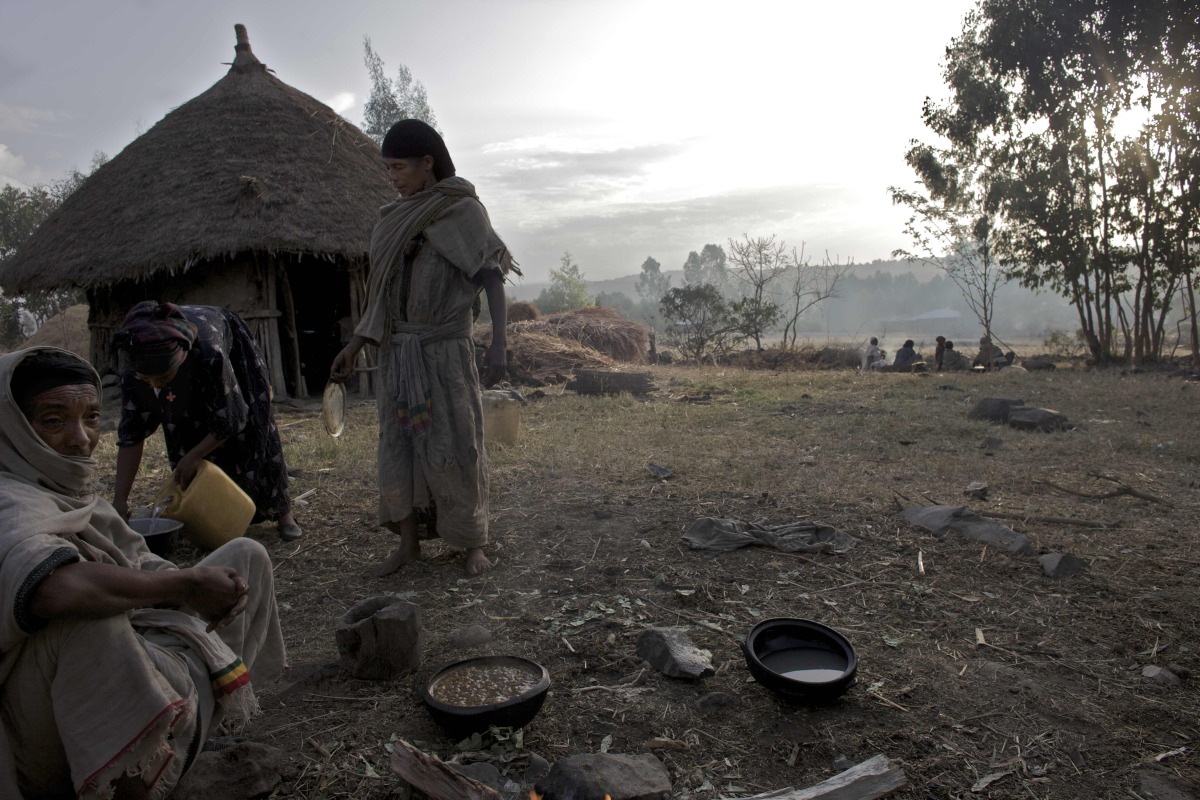

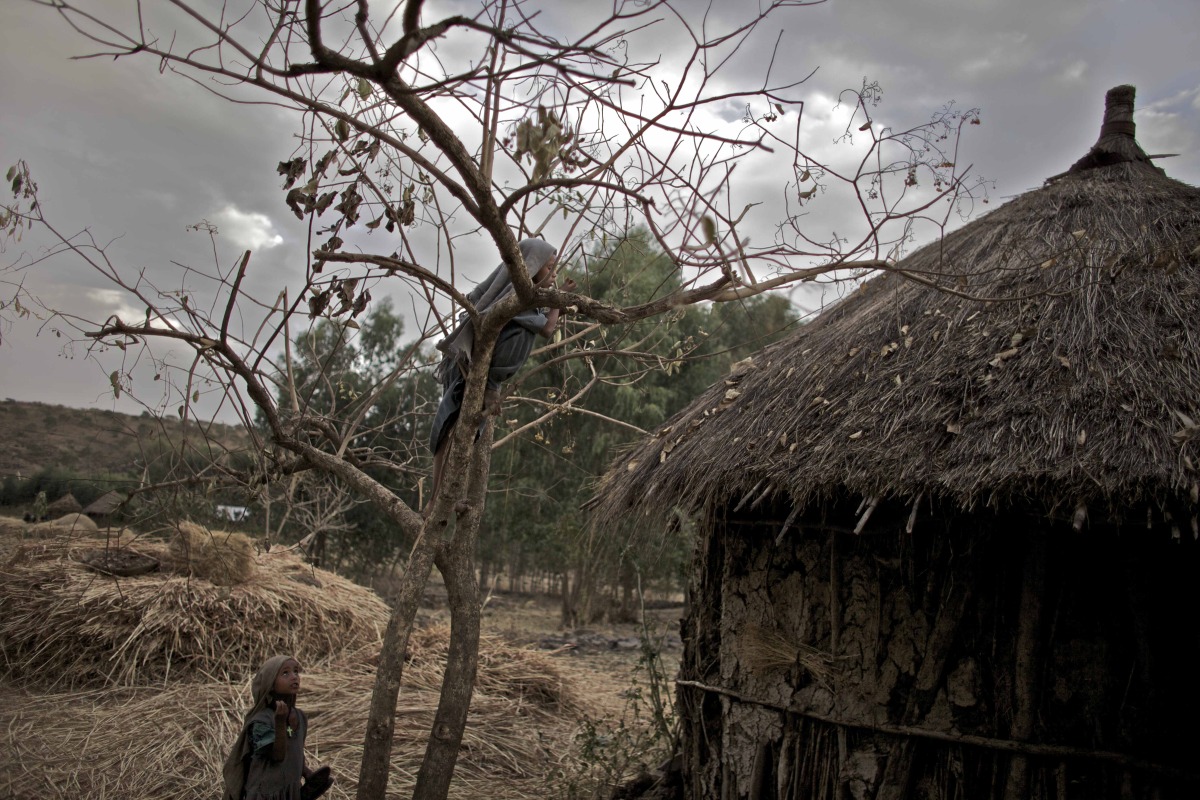
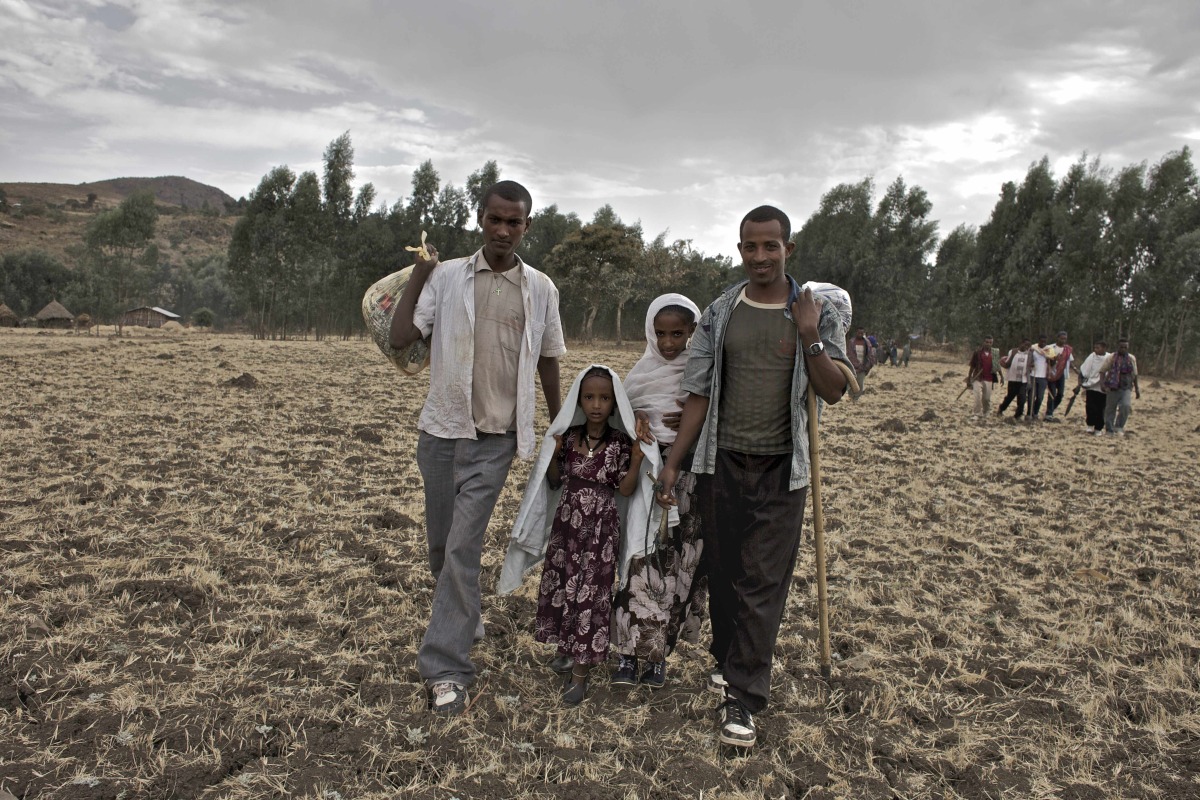
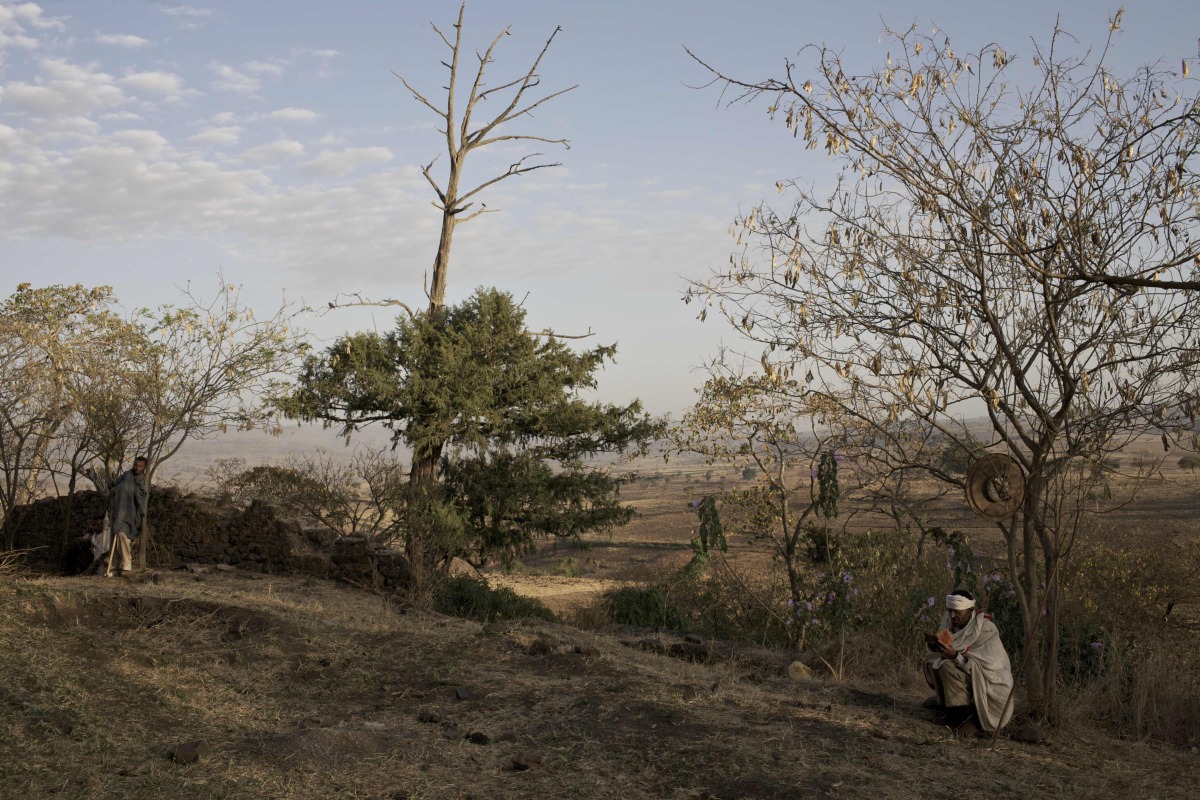
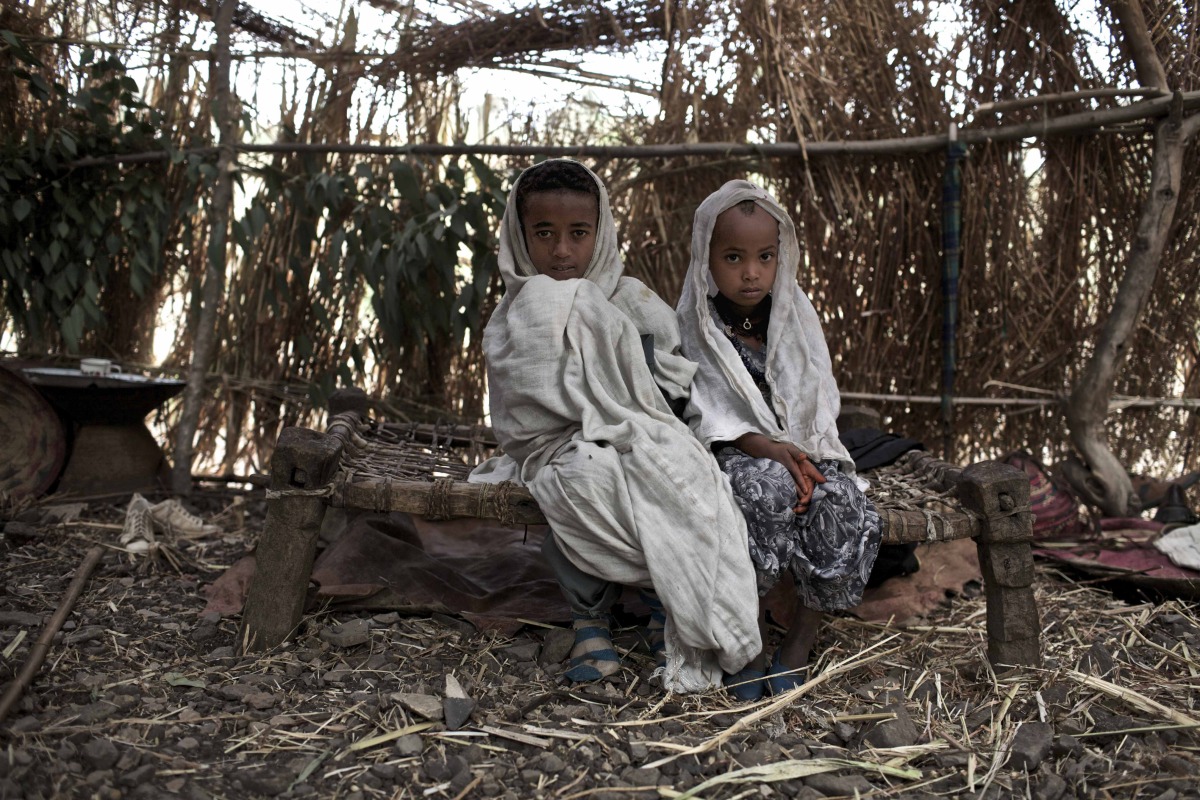
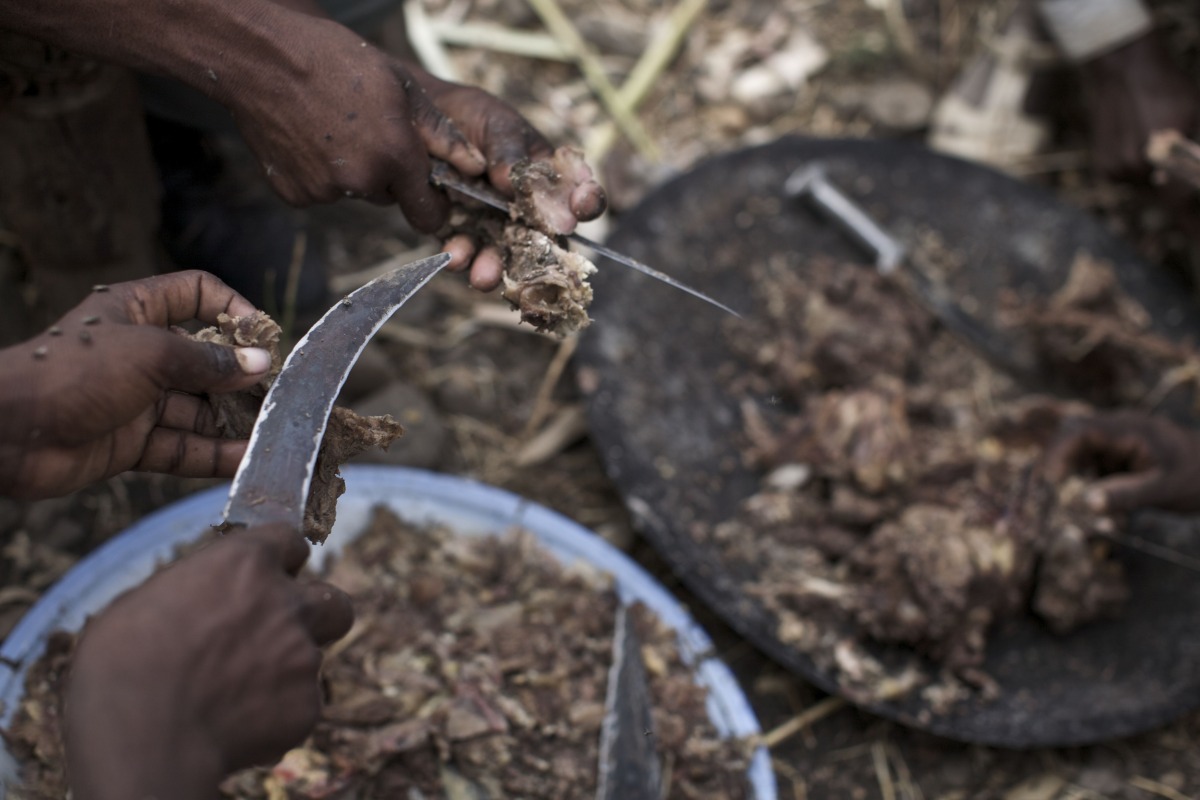
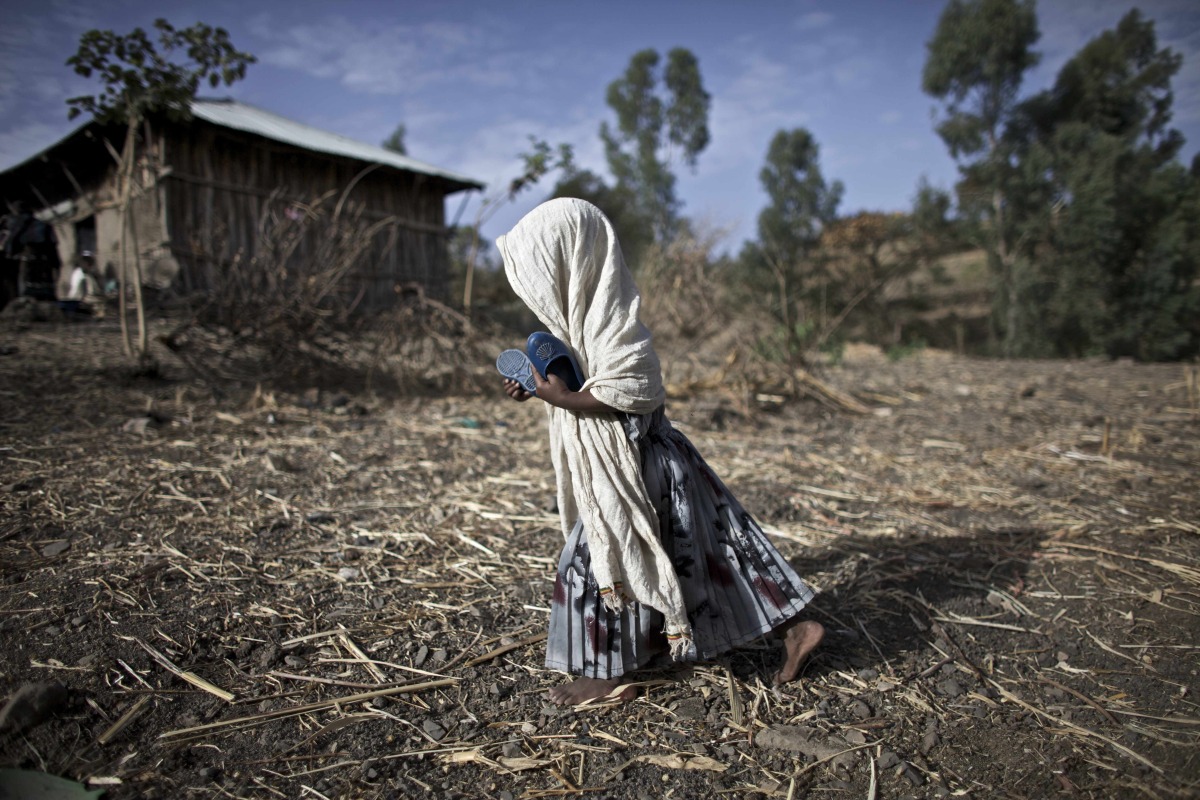
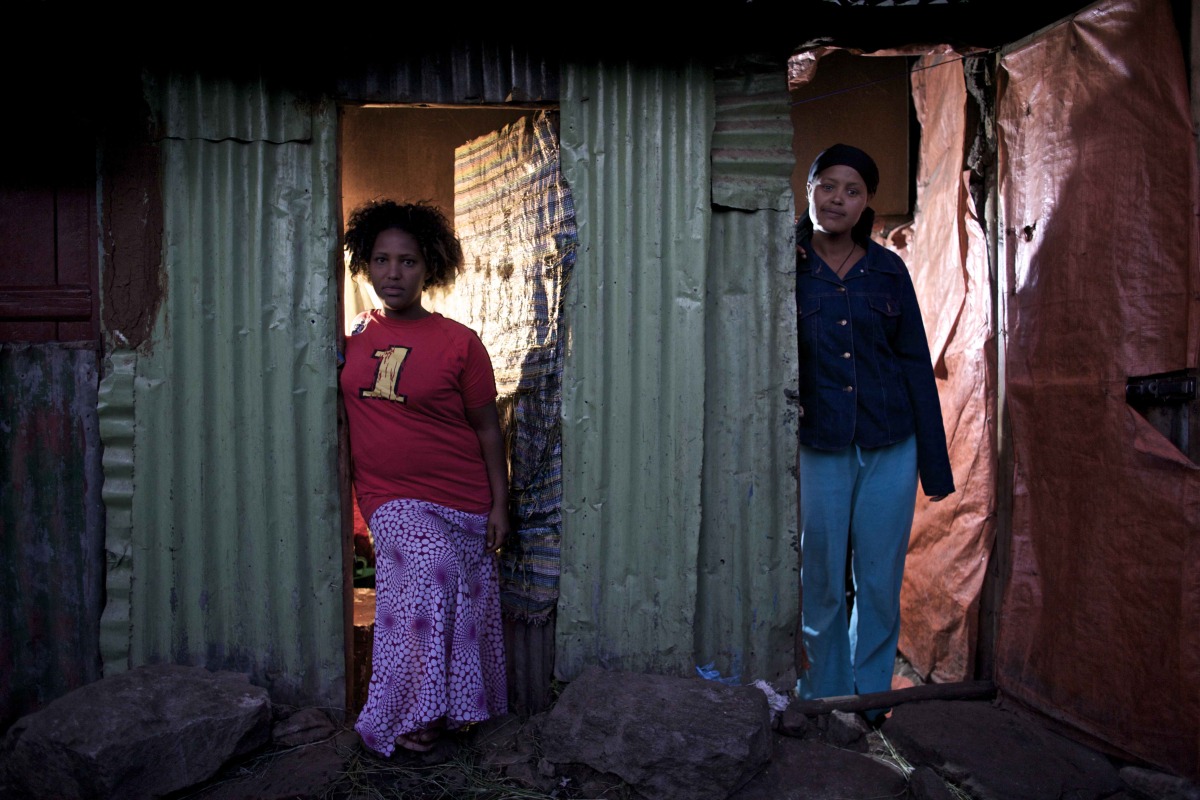
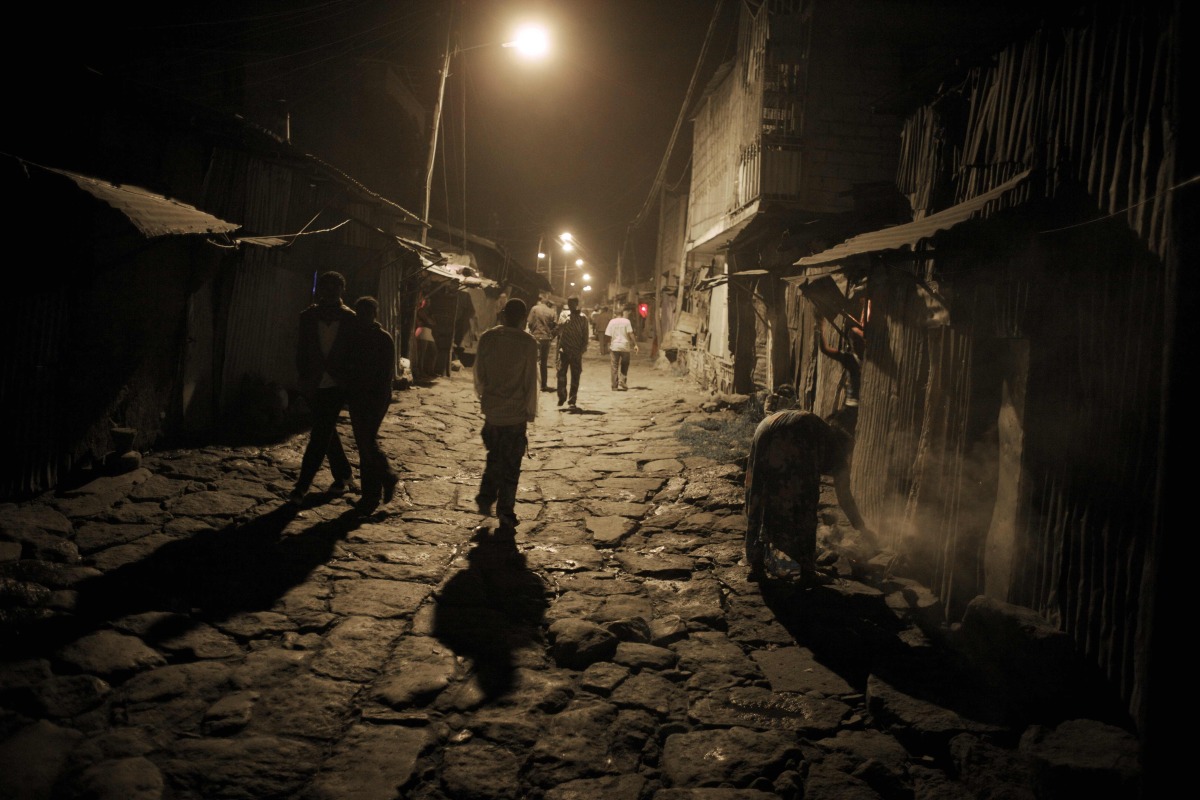

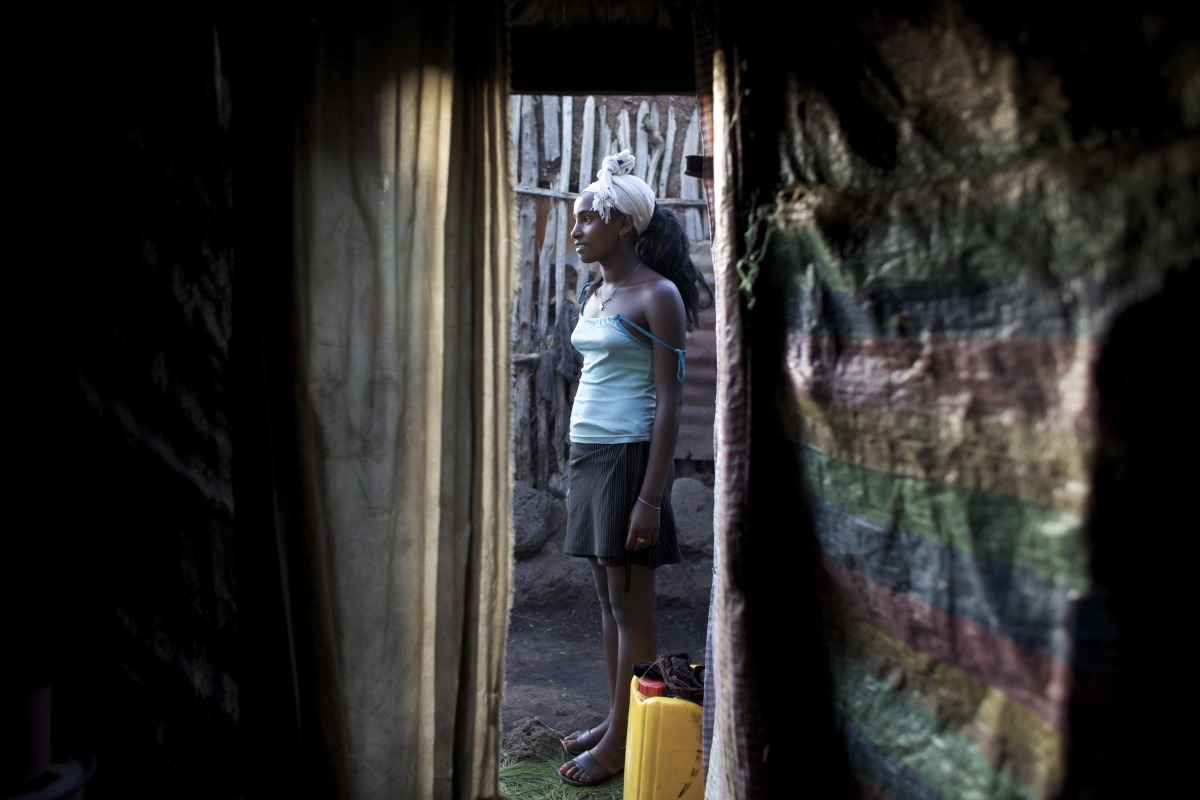
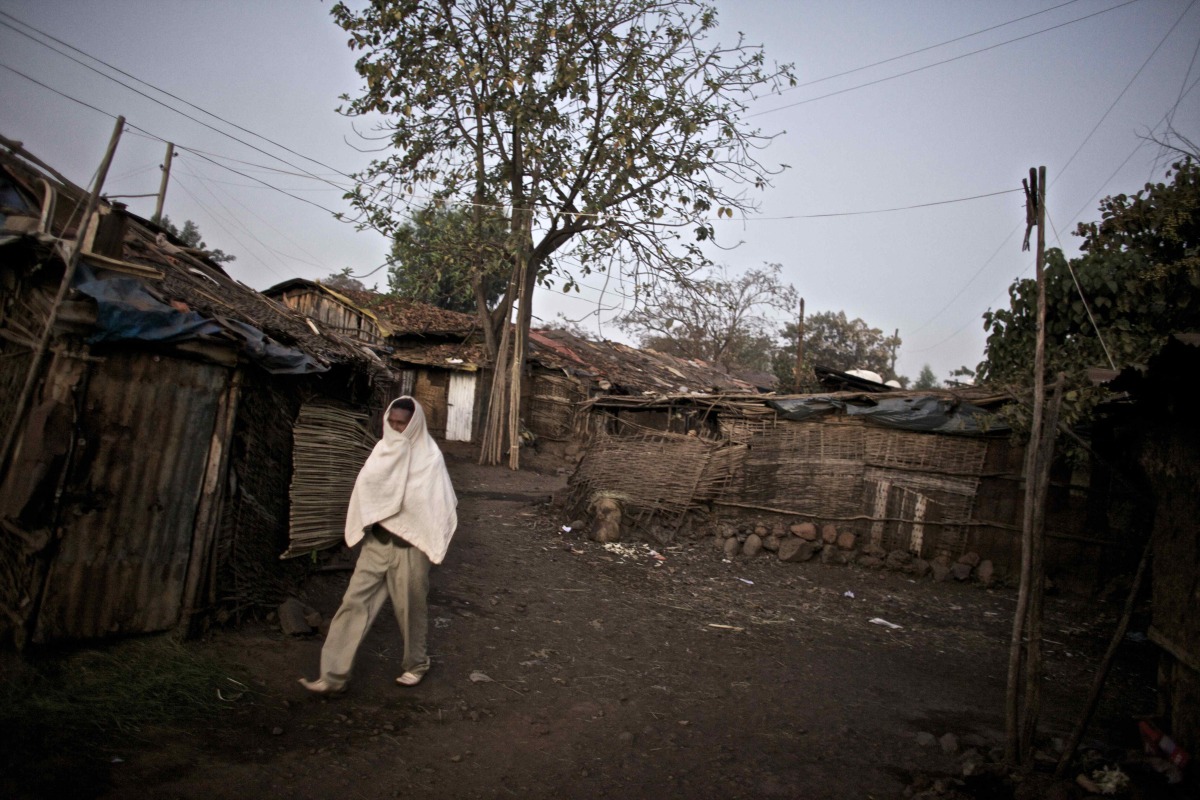
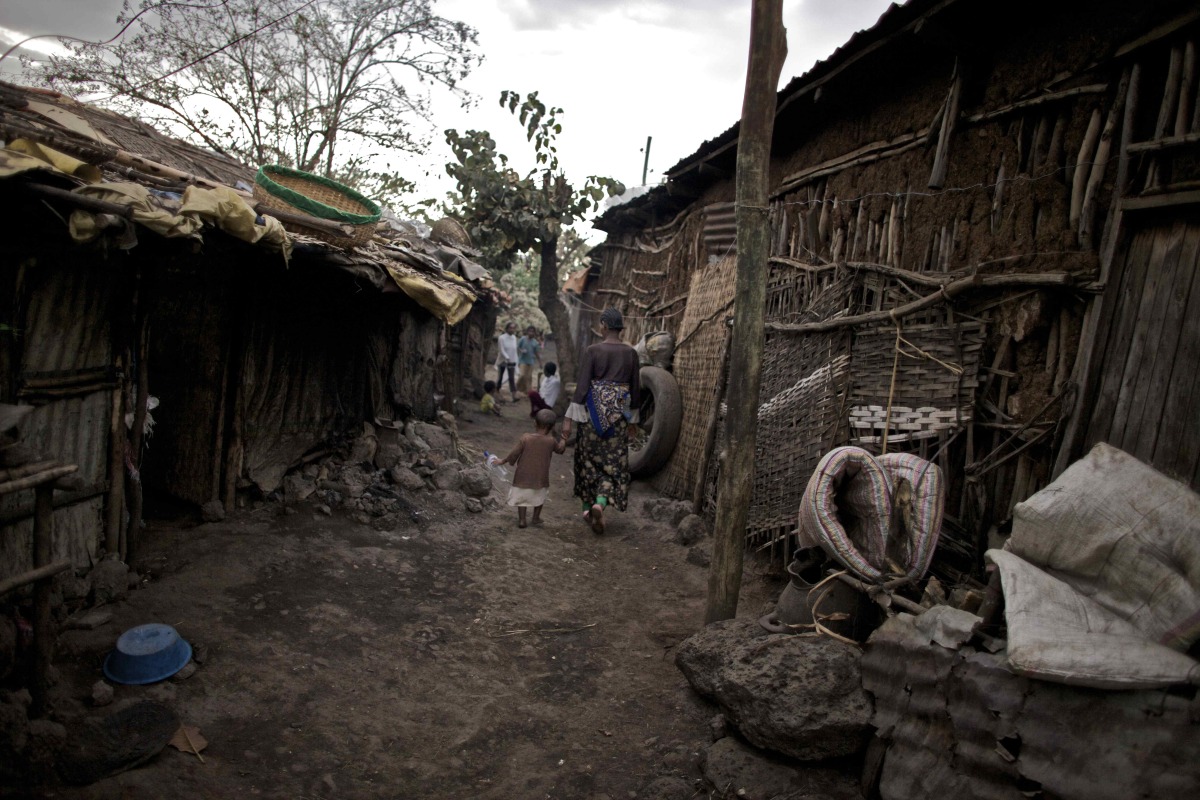
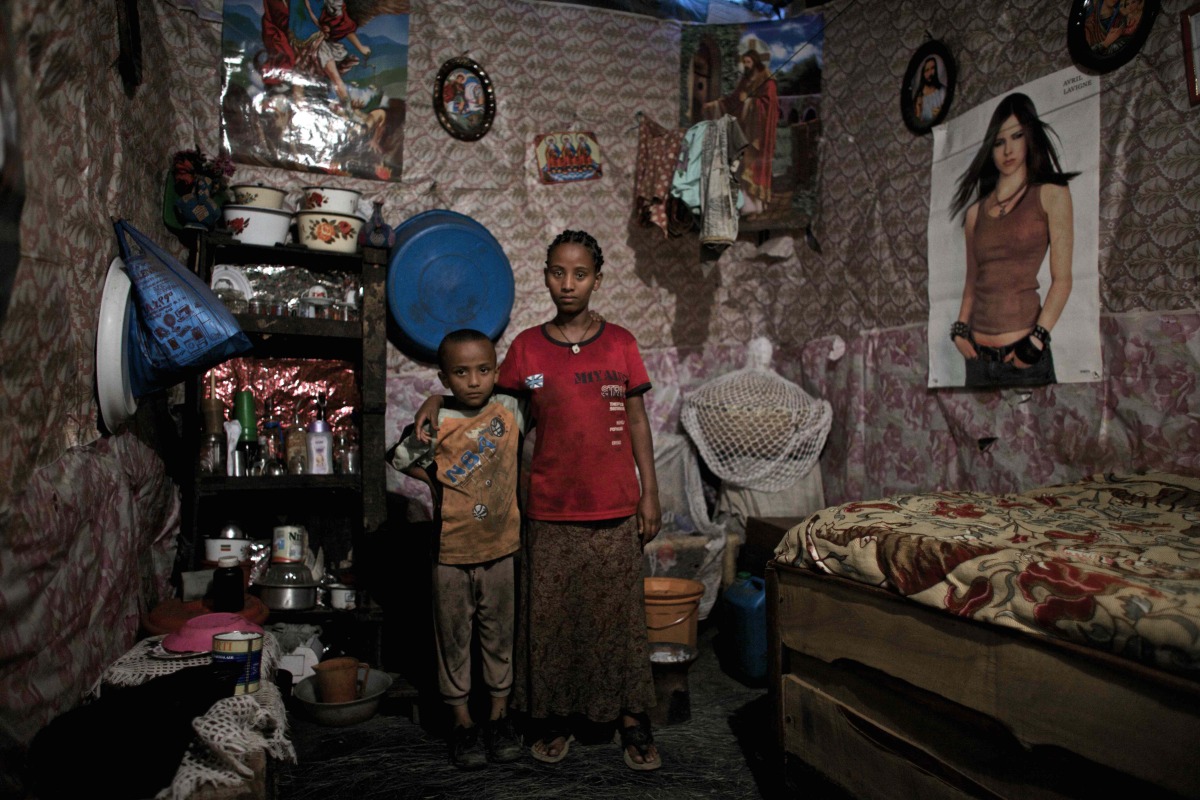
PHOTO ESSAY: Child Marriage in Ethiopia
While it may seem shocking, in Ethiopia girls are married off at ages as young as 5 years old, and 48% of rural women are married before age 15. Photographer Guy Calaf documents these young child brides and their marriages in this photo essay.
Read MoreLike so many others across the country, this village in Ethiopia’s Omo Valley blends seamlessly into its colorful surroundings. Rod Waddington. CC BY-SA 2.0
Top 5 Sites to Visit in Ethiopia, Africa’s Hidden Gem
Boasting a stunningly diverse landscape, a rich culture and nine UNESCO World Heritage Sites, Ethiopia belongs on every traveler’s bucket list. As word gets out, more and more visitors are discovering – and falling in love with – the East African country’s seemingly endless charms.
Seen from above, the Church of Saint George looks impressive. From below, it’s simply unreal. Bryan_T. CC BY-ND 2.0
Lalibela
Painstakingly chiseled out of rock in the 13th century, the 11 churches of Lalibela stand as powerful symbols of Ethiopia’s devotion to Christianity. After Jerusalem’s fall to Islamic conquest, King Lalibela ordered construction of a “New Jerusalem” in his own land. The results are spectacular: the Church of Saint George rests in the shape of a cross, seemingly inaccessible due to its position below ground. It’s nearly incomprehensible that the churches of Lalibela were carved out by hand 800 years ago. You may come to believe, as many locals do, that angels alone could have built such a masterpiece.
The Simien Mountains, often known as the “Water Tower of Africa,” are one of the top contributors to the Nile River. Thomas Maluck. CC BY-ND 2.0
Simien Mountains National Park
Known as the “Roof of Africa,” the Simien Mountains present a landscape of sheer cliffs, winding canyons and peaks once described by Homer as the “chess set of the gods.” Few places in Africa offer such breathtaking scenery; however, travel here takes some work. To fully experience the Simiens, prepare for long days of trekking and nights spent in remote villages. The trip may be tough, but travelers who persevere can expect jaw-dropping scenery unlike anywhere else on earth.
Eerily similar to the mazelike medinas of North Africa, Harar holds no comparisons across Ethiopia. Rod Waddington. CC BY-SA 2.0
Harar Jugol
Considered the fourth-holiest city of Islam, Harar gives off a distinct vibe from the rest of Ethiopia. Visitors head to Jugol, the fortified city, to take in the area’s maze of 368 alleyways and 48 mosques – all packed into less than a half a square mile.
Sulfur pools are one of the many anomalies that draw visitors to the harsh landscapes of the Danakil Depression. Ian Swithinbank. CC BY-ND 2.0
Danakil Depression
Lying 400 feet below sea level and recognized as one of the hottest places on earth, the Danakil Depression is downright inhospitable. Scientists flock to the region to test out whether microbes can survive the environment, believing its harshness to be about equal to that of Mars. Visitors are equally enticed by the Danakil Depression’s otherworldliness, seeking out neon-colored lakes, steaming fissures and bubbling lava patches. Travel to the area is not for the faint of heart; daytime temperatures reach up to 120 degrees Fahrenheit and the condition of the “roads” is equally hideous.
Nearly anything can be found at the Mercato, the largest open-air market in all of Africa. Jasmine Halki. CC BY 2.0
Addis Ababa
Ethiopia’s capital and largest city may not hold many star attractions, but nowhere else does the country’s culture so vividly come to life. Indulge in a cup of coffee in one of Addis Ababa’s countless cafés; this is, after all, the birthplace of the drink. Lucky visitors may receive an invite to an Ethiopian coffee ceremony, a tradition that lasts for hours and is reserved for close friends. Addis also contains some of Ethiopia’s best food. Make sure to try injera, a spongy bread filled with meat, vegetables and countless spices. Finish off the stay by visiting the Mercato, Africa’s largest open-air market. A dizzying array of gifts can be found, helping to carry the delightful essence of Ethiopia all the way home.
Stephen Kenney
Stephen is a Journalism and Political Science double major at the University of North Carolina at Chapel Hill. He enjoys sharing his passion for geography with others by writing compelling stories from across the globe. In his free time, Stephen enjoys reading, long-distance running and rooting for the Tar Heels.
Saving More Elephants with Honey than with Vinegar
The vast majority of people around the world have only seen African elephants from a television screen, from behind fences in zoos, or- if they’re lucky- from a safe seat in a safari car as it bounces past the grazing giants of the Serengeti. From those vantage points, it’s impossible to look at the massive bodies, dexterous trunks, and intelligent eyes of the elephant and not feel a keen sense of wonder and awe. Elephants are some of those ‘charismatic megafauna’ that capture the hearts of people worldwide, making conservation efforts seem like a no-brainer. Who wouldn’t want to protect and save these wise, complicated, prehistoric-seeming creatures?
The people who share a homeland with elephants might be in that category.
Elephants are herbivores, and must eat almost constantly to maintain enough calories to support their gargantuan bodies- individual adults can consume between 200 and 600 pounds of food per day. Traveling in family groups that can consist of 10-20 elephants or more, that’s an incredible amount of vegetation needed to sustain a herd.
In addition to the grasses, roots, fruit, and bark found in the wild, elephants have quickly learned that their human neighbors can provide a tasty supplement to their diet- fields of carefully tended yams, cassava, corn, plantains, and grains. A herd of elephants can destroy a subsistence farmer’s means of food and income for the whole year in just a single night.
These episodes of crop raiding have created dangerous situations for people living in sub-Saharan Africa. Desperate to protect their livelihood, farmers may try to stay awake all night, ready to yell and bang pots in an effort to frighten away any pachyderm pilferers. However, elephants are not so easily startled by humans, and have been known to attack and kill would-be crop defenders. In anger and frustration, a group of villagers may then retaliate and try to kill the next group of elephants they see. These was creating a vicious cycle of animosity on both sides; elephants are intelligent creatures, and once they began associating humans with pain and disruption, there was evidence that they became more violent to humans in future encounters.
The heightened tensions were disastrous for both humans and elephants, and a solution was desperately needed to protect both vulnerable groups.
There had been local rumors buzzing around for a while that claimed elephants were afraid of bees, but it wasn’t until researchers Fritz Vollrath, Dr. Iain Douglas-Hamilton, and Dr. Lucy King investigated that those results were confirmed to the rest of the world. When confronted with the sound of bees buzzing, the elephants would immediately retreat and send out a rumbling call that would warn other elephants of danger in the area. Additionally, the elephants would begin shaking their heads and dusting themselves, suggesting that their skin was sensitive to bee stings and that they knew to associate the sound with potential pain.
Armed with this knowledge, researchers, nonprofits, and government groups set out to make affordable beehive fences that could protect precious crops from marauding elephants and protect elephants from learning dangerous behaviors that would bring them into conflicts with humans.
In the last few years, as the success of the beehive fences has been proven time and again, they are gaining in popularity throughout Africa. The fences are genius in their simplicity; a hanging box hive is hung from a fence every ten meters, all connected by wire. This way, if an elephant brushes against the fence or wire, the hives will swing and rock and the bees will swarm out to get away from the disturbance. Nearly 100% of the time, the elephant will turn tail and run, warning its family members to stay away. Thanks to their famous memories, the elephants won’t soon forget that lesson.
Not only do the fences allow farmers to harvest their full crop without any losses to elephants, but the honey produced in the hives has also found a niche market. “Elephant-Friendly Honey,” as it’s called, has been a huge hit with globally conscious consumers who increasingly want to know that the products they are buying support a good cause.
African elephant populations have slowly been increasing since the poaching crisis that decimated their numbers in the 1970’s and 1980’s. While the rest of the world celebrated that fact, many African people living in close proximity to elephants couldn’t see why people around the world were so eager to save the creatures that were plaguing their lives and livelihoods. Now, thanks to an increased effort to help protect people along with ivory-tipped neighbors, more and more people are able to view their globally treasured wildlife with a sense of pride instead of fear.
Katharine Rose Feildling
Katharine Rose was born in Maryland and is currently working for the Condor Recovery Project in California. She studied wildlife management in East Africa, and gained a deep passion for wildlife conservation, social activism, and travel while there. Since then, she has traveled and worked throughout the United States, South America, and Asia, and hopes to continue learning about global conservation and inspiring others to do the same.
Child Slavery in Ghana
When Elizabeth Tulsky participated in NYU’s study abroad program in Ghana, she also independently volunteered with City of Refuge, a local organization that uses education as a tool to combat child slavery. She said of her experience that it had “a tremendous impact on my life and what I want to do in the future.”
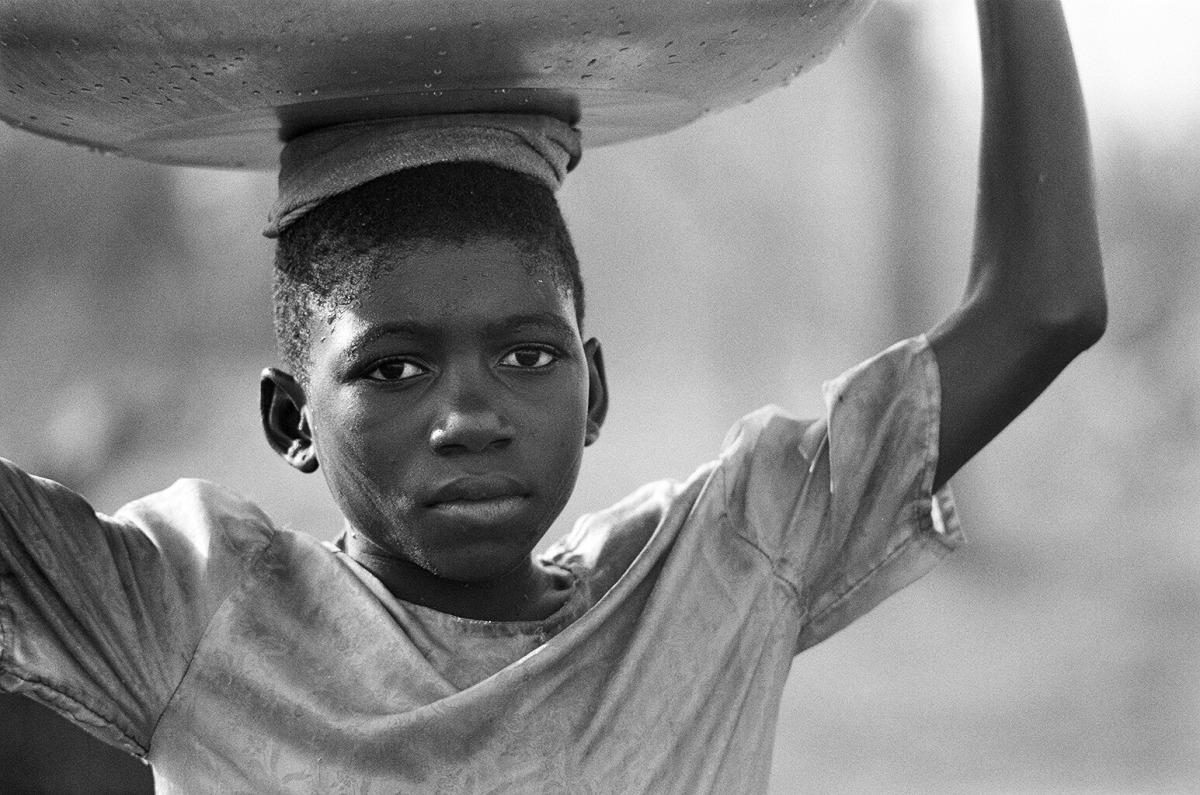
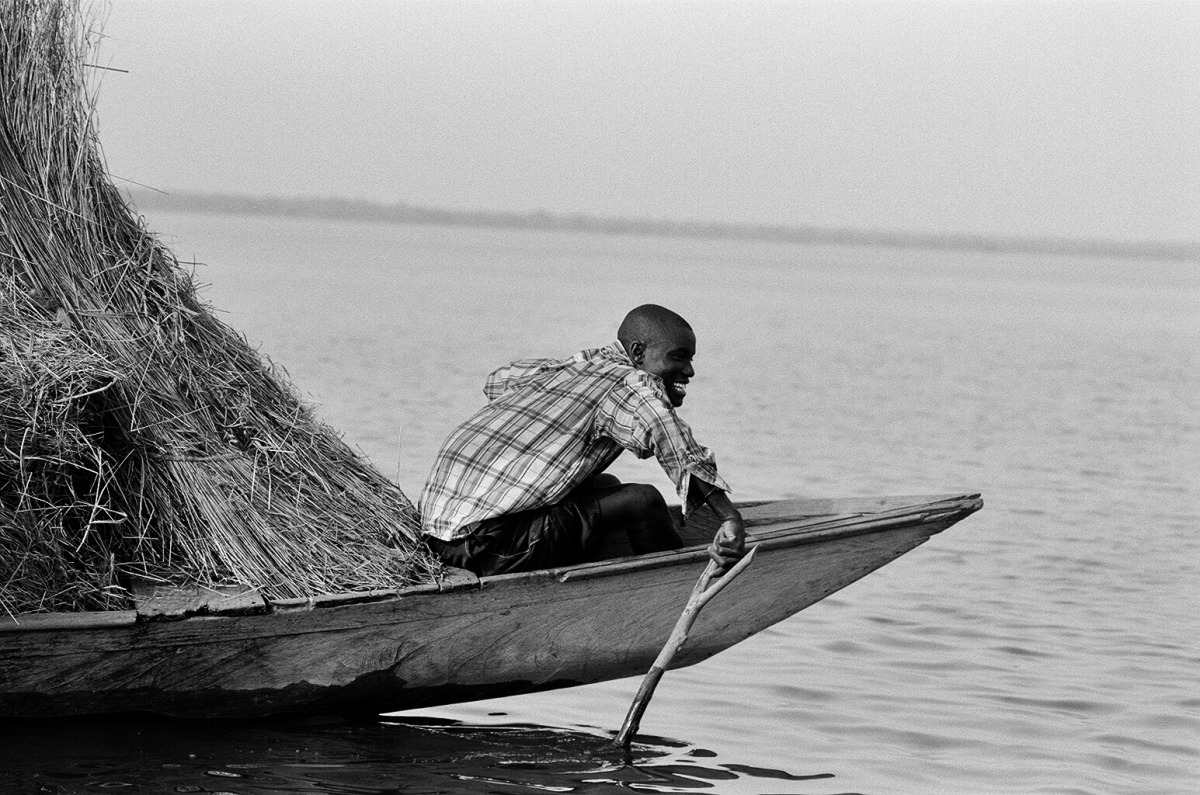
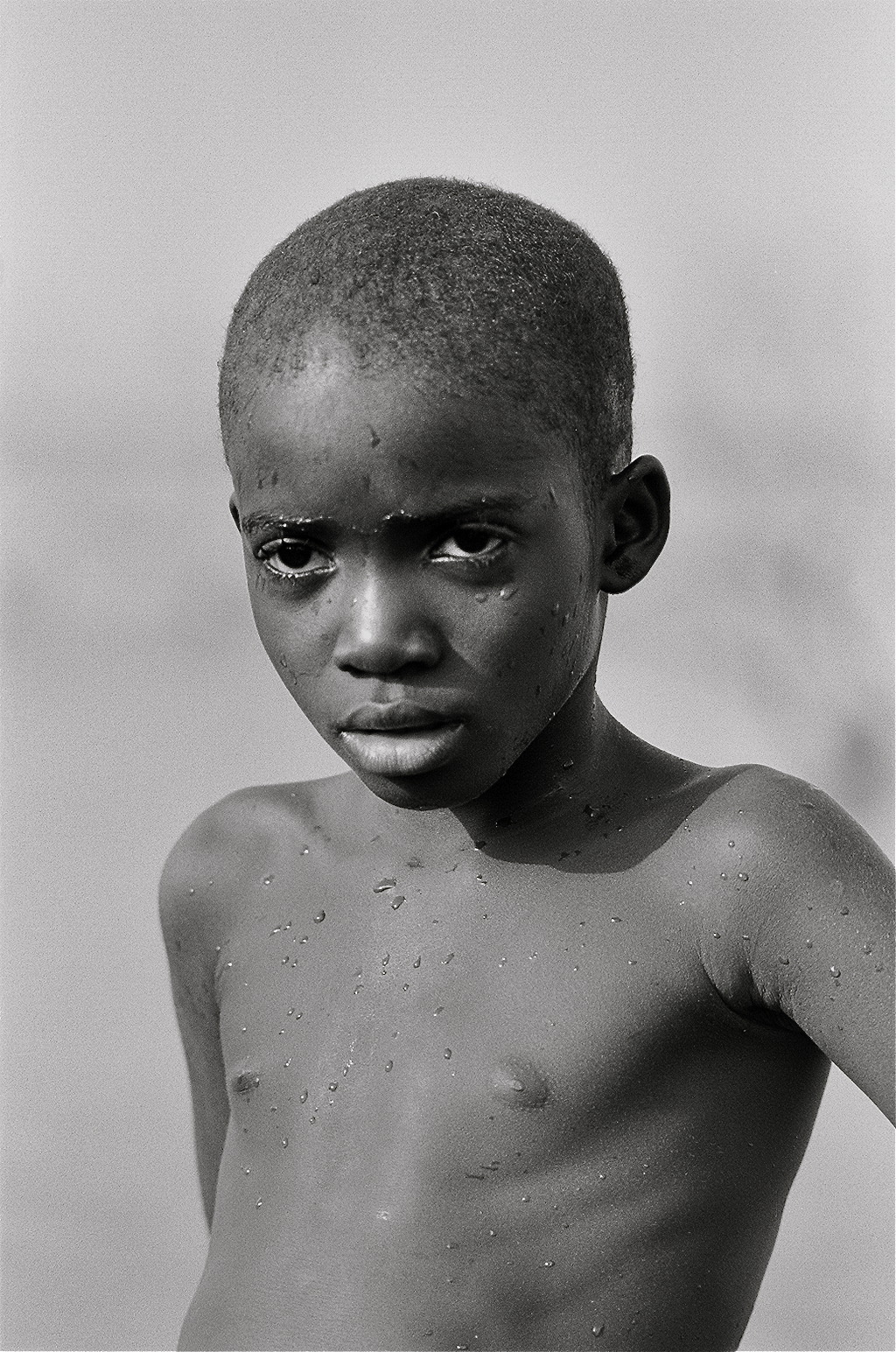
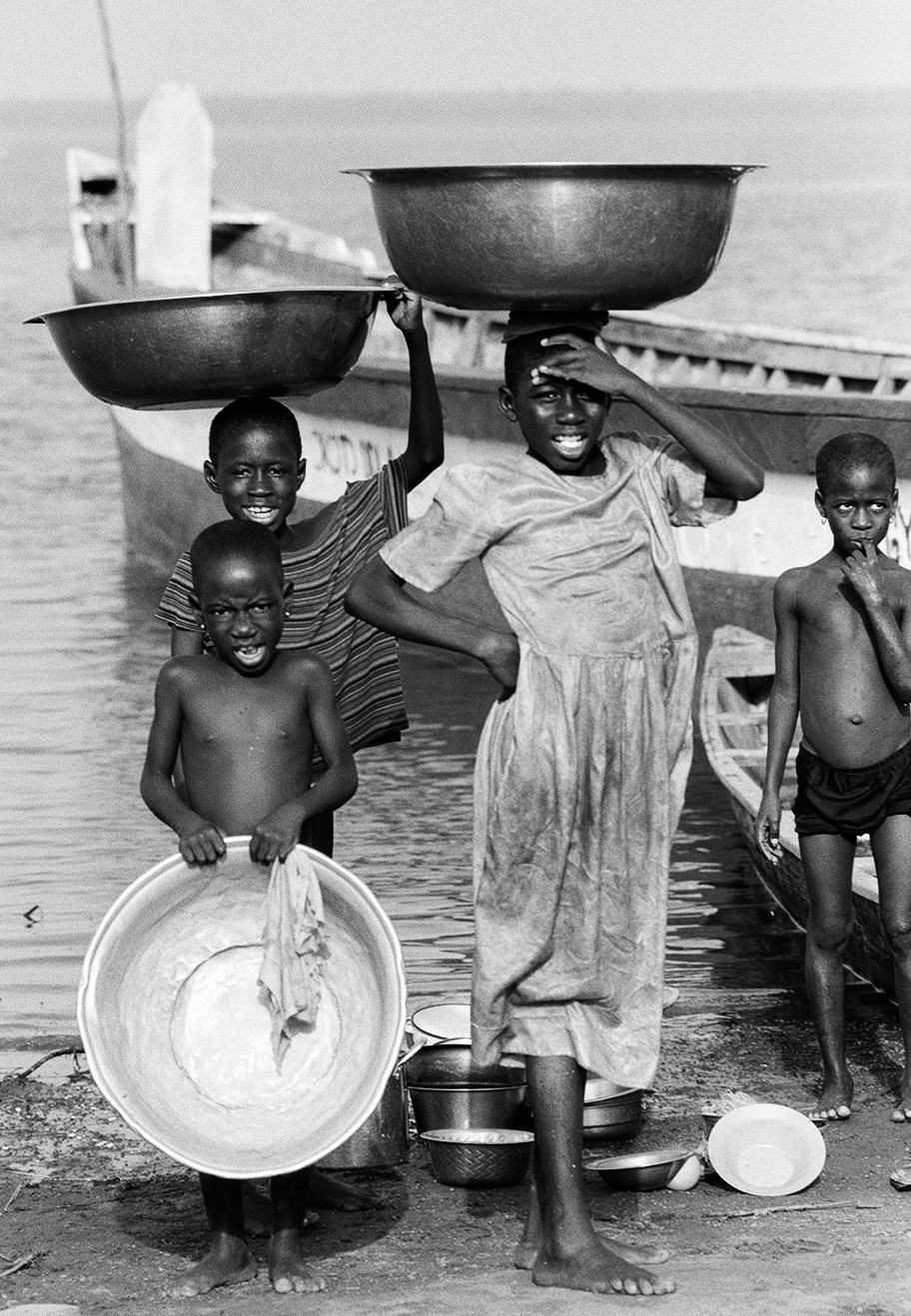
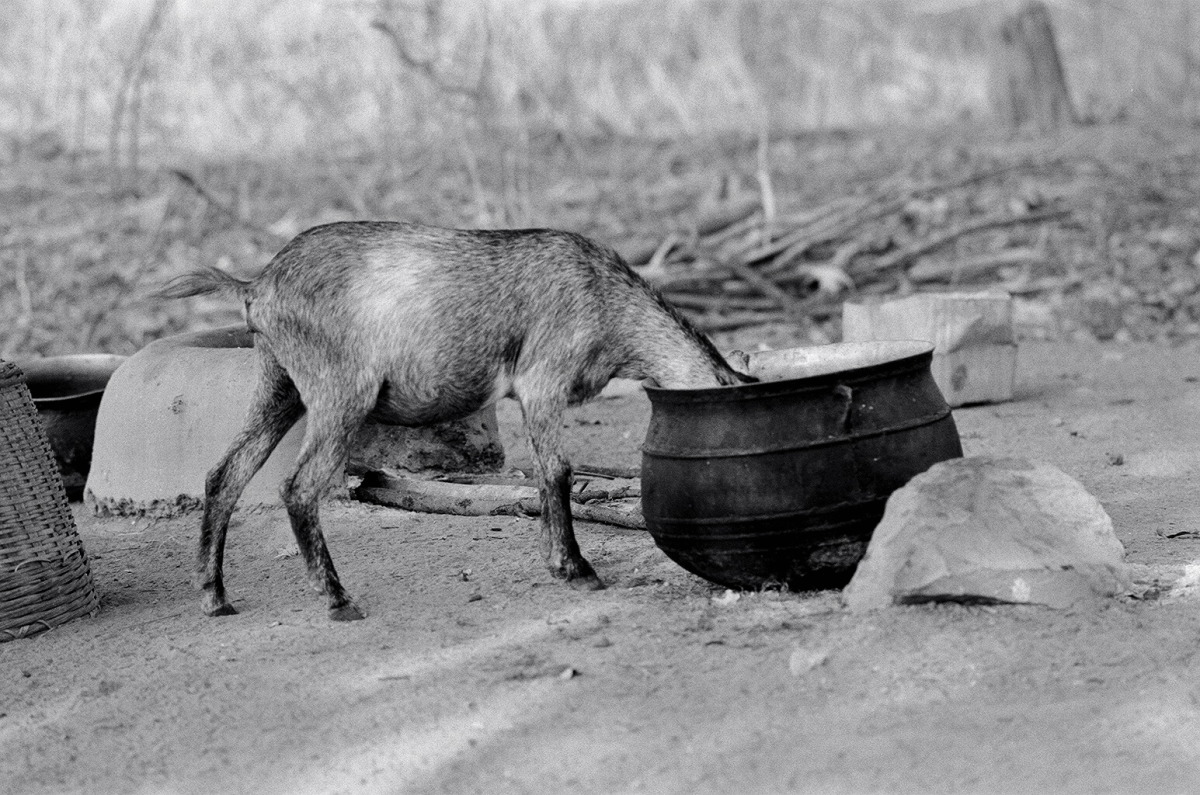
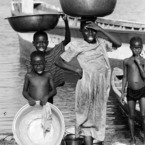
In Ghana, children are often enslaved, maltreated and many mothers struggle to see their children as more than a financial burden. While there are no statistics on the actual number of children trafficked, estimates are in the thousands. What is known is that 25% of Ghanaian children ages 5-14 years are involved in child labor. Child labor and human trafficking are both against the law in Ghana, however, laws are not enforced.
City of Refuge fights against child slavery by educating small villages about the harms of keeping children out of school and depriving them of a childhood. The organization is founded on the belief that if they can empower single mothers educationally and economically then they will no longer be vulnerable to selling their children as slaves.
Can you tell me a bit about City of Refuge and the work they do?
City of Refuge workers enter villages and open discussions with the chiefs in a respectful manner and work to free children who are in dangerous and/or miserable conditions and separated from their families. On a daily basis, City of Refuge provides home, happiness, and sanctuary to many rescued children. Furthermore, City of Refuge runs the only public school in the city, Doryumu. The organization works at the root of the problem, beginning with single mothers. Many children end up in slavery because mothers simply have absolutely no means of supporting themselves, much less their young children. Selling them, as hard as it may be to believe, truly seems like the only option for many women. Thus, City of Refuge works with single mothers to find alternative solutions to make ends meet, and have started two local businesses to be run by single mothers to increase opportunities for mothers and in turn, reduce the number of children sold into horrific situations.
How were you involved with the organization?
I worked in the small school where the children living with the City of Refuge family were educated and spent my evenings at the home playing with children and helping them with their homework. I also spent time shadowing the founders and through this I learned much about the process.
What do you know about child slavery in Ghana?
Children are targeted as slaves for fishermen for several reasons. First, children are easy to acquire as so many parents are impoverished and feel financially helpless. Second, children’s small hands are ideal for making and untangling fishing nets. When the nets get trapped in trees in the lake, children are sent in the water to untangle them. Unfortunately, this means many of the child slaves are incredibly susceptible to water-borne disease and illness and sadly, some do not know how to swim and may drown in the water. Children who are enslaved receive no form of education or care and spend up to eighteen hours a day working on the lake. They are often fed no more than one meal a day, which frequently consists of just gari, a food made from cassava, soaked in the lake water.
Any advice for travelers going to Ghana?
This is probably true for every country, but just approach everything with an open mind, try new things, immerse yourself in the culture as much as possible.
How can readers help the victims of Child Slavery in Ghana?
Check out City of Refuge for more information.
Other organizations doing good work include Youth Generation Against Poverty (YGAP), an organization that inspires volunteers through creative fundraising opportunities. They have created several projects partnered with City of Refuge.
Elizabeth Tulsky
Elizabeth studied social work at NYU and has experience working with trauma, grief, family issues, depression, anxiety, ADHD, and general life transitions. She hopes to use her work to create culturally responsive, affirming and inclusive healing spaces while promoting the use of person-centered, strengths-based, trauma-informed, anti-racist and social-justice frameworks.
Mass Detention of Civilians In Ethiopia
The Ethiopian government declared a state of emergency, resulting in the detention of civilians on suspicion of cooperating with rebel terrorists.
Addis Ababa, capital of Ethiopia. DFID - UK Department for International Development CC BY 2.0
Ethiopia has been in the throes of a civil war. The federal government, headed by Prime Minister Abiy Ahmed, has been fighting against Tigrayan rebels in the northwest region of the country. Recently, it appears Tigray fighters are at an advantage as they push south towards the nation’s capital. In response, the government declared a state of emergency Nov. 2 and began to roundup civilians of Tigrayian descent. Civilians with no connection to the rebels are being detained, forced from their homes, plucked off the street or at work. The United Nations stated that more than 1,000 people have been detained since the government declared the state of emergency. Additionally, they reported that 70 drivers contracted by the United Nations and agencies to deliver aid to the country have been detained by officials as well. Along with the detained drivers, 16 employees of the United Nations were detained following the state of emergency. These employees were present because the Tigray region is in desperate need of aid after airstrikes fell on the region in mid-October. The dire situation in Tigray has been labeled an ongoing humanitarian crisis.
The civil war broke out after tensions between the Tigray’s People Liberation Front political party and the federal government came to a point. The party previously held control of the Ethiopian government for decades, until Prime Minister Abiy Ahmed took office in 2018. In 2020, the T.P.L.F attacked a military base in the Tigray region, prompting the Prime Minister to order a military offensive in response. In June, the Ethiopian military was forced to withdraw from the Tigray region, marking a major defeat and subsequent turning point of the conflict.
In July 2021, the United Nations requested access to the region because an estimated 400,000 people were experiencing famine, with another 1.8 million at risk. Additionally, 1.7 million people have been internally displaced while thousands of others have fled the country.
The state of emergency declared on Nov. 2 allows officials to search anyone’s home and arrest without a warrant solely based on suspicion of association with rebel groups. The recent arrests have included other ethnicities, but the majority of detentions have been people of Tigrayan descent. Along with the large-scale detentions, public figures allied with the government have taken to social media inciting hate speech against ethnic Tigrayans. The head of the Ethiopian government communication office stated that the detentions were not ethnically motivated, but the United Nations High Commissioner of Human Rights expressed concern at the broad terms of the recent state of emergency.
Dana Flynn
Dana is a recent graduate from Tufts University with a degree in English. While at Tufts she enjoyed working on a campus literary magazine and reading as much as possible. Originally from the Pacific Northwest, she loves to explore and learn new things.
The World’s Electronic Waste is Ending Up in Ghana’s Landfill
While new tech gadgets launch every few months, the buildup of electronic waste is being sent to Ghana and damaging the citizens’ health.
Location, Ghana. Fairphone. CC BY-NC 2.0
The capital city of Accra in Ghana is home to the largest e-waste landfill, Agbogbloshie. Electronic waste or e-waste is waste material with any battery or power cable. It ranges from everyday appliances to laptops, circuit boards, lamps, phones, etc. If these items are not disposed of properly, they can become harmful to the environment and people. An estimated 250,000 tons of electronics are sent every year to the dumpsite. The site not only houses e-waste, but about 40,000 Ghanaians inhabit the area alongside livestock.
The e-waste arrives in Ghana through the Port of Tema, about 20 miles east of Agbogloshie. Most of the items in the container ships are from the United States or Western Europe. The electronics are secondhand and sent to Ghana with the idea of being refurbished then sold. The majority of the items cannot be fixed and become e-waste, which is then taken to Agbogbloshie. Once the electronics arrive at the dumpsite, there is an entire process the electronics go through. First, small collectors sell the items to scrap dealers known as “masters.” The scrap dealers then have their workers, known as “boys,” use their bare hands, hammers and other tools to break apart the valuable metals inside. At times insulated wires are bundled together and taken to the “burner boys” they’re in charge of burning the plastic off of the wires. In doing so, they’re able to retrieve valuable metals. The metals include copper, aluminum, zinc, silver and others. Once the metals are recovered, they are weighed and sold for instant cash.
PCBs Used to Extract Metals. Fairphone. CC BY-NC 2.0
The supply and demand is what fuels the toxic pollution in Agbogbloshie. As soon as the bulk of metals and wires are sold, they are exported out of Ghana and reused to produce new devices. The men and young boys who do this harmful labor are usually from rural northern cities searching for work to provide for their families back home. A “burner boy” will make about $40-50 Ghanaian cedis a day (US$6-8). Living in extreme poverty and barely making enough to move further up the chain, along with paying the ultimate price with their lives. They work arduously with no protective gear and no government regulations. At times, these young men and children have multiple health issues due to the toxic fumes and chemicals that leak from the electric waste. They face chronic nausea, debilitating headaches, skin diseases, burns, respiratory problems, infected wounds and cancer among others. All these issues are brought on by the toxic work environment, pollution and lack of regulations. Most people know that this line of work is debilitating to their health. However, the desperation for survival is the driving force.
The people who work and live in Agbogbloshie are not the only ones suffering; the livestock is, too. The toxins are entering the food chain as cattle roam and graze the dumpsite freely. This is concerning as the Agbogbloshie area is home to one of the largest food markets in Accra. Most of the cows and chickens are slaughtered and eaten by the residents, which then ingest the high-level toxins. In addition, the water is also being contaminated as Agbogbloshie is situated on the Korle Lagoon. This lagoon is filled with piled-up waste of all sorts and links to the Gulf of Guinea, the Northeastern part of the Atlantic Ocean.
Goat Freely Roaming. Fairphone. CC BY-NC 2.0
Agbogbloshie is known to many of the locals as Sodom and Gomorrah. These biblical cities are synonymous with Agbogbloshie’s difficult living conditions. Although harsh, the people of this slum depend heavily on electrical waste in order to make a living. The Ghanian government has condemned the activity that’s taking place here. However, it has not lessened. As of now, change might be taking place in the near future. The German agency, GIZ, is in the middle of delivering a $5.5 million project for the people of Agbogbloshie. The plan is to build a sustainable recycling system and a health clinic and football pitch for workers. Much more will need to be done to keep the people’s health intact and away from this harmful environment. However, this is a start in bettering the status quo.
Jennifer Sung
Jennifer is a Communications Studies graduate based in Los Angeles. She grew up traveling with her dad and that is where her love for travel stems from. You can find her serving the community at her church, Fearless LA or planning her next trip overseas. She hopes to be involved in international humanitarian work one day.
W.H.O. Approves First-Ever Malaria Vaccine
On October 6, the World Health Organization recommended the vaccine Mosquirix for widespread use against the deadliest malaria-causing parasite. The vaccine is anticipated to save the lives of over 100,000 young children living in sub-Saharan Africa.
Malaria Vaccine. tpsdave. CC BY 2.0.
On October 6, the WHO Director-General announced the UN agency’s approval of humanity’s first vaccine against malaria for broad rollout. Dr. Tedros Adhanom Ghebreyesus termed the announcement a ‘historic moment’ and a ‘glimmer of hope’ for sub-Saharan infants and children, who are the most vulnerable demographic to die from the parasitic disease.
Disease Background
Malaria is a life-threatening infectious disease caused by the Plasmodium” family of protozoan parasites. The disease is transmitted via mosquito bites rather than human contact. Mosquitoes’ saliva can pick up the parasite from an infected person, then give the parasite to the enxt healhty person they bite. Upon contraction, the parasite circulates throughout the human bloodstream and destroys their red blood cells. Within two to four weeks of contraction, malaria symptoms such as fever, aches, chills, nausea and vomiting occur. Severe cases of malaria can cause anemia and jaundice, and if left untreated, it can cause seizures, kidney failure, coma or death.
Disease Burden
Though there are nearly 230 million cases of malaria worldwide, Africa pays the greatest price. The continent sees 94% of malaria cases globally, where six countries account for approximately half of all reported malaria deaths: Nigeria (23%), Democratic Republic of Congo (11%), United Republic of Tanzania (5%), Burkina Faso (4%), Mozambique (4%) and Niger (4%). While malaria occurs in other regions such as South America, the disease predominantly wreaks havoc upon the planet’s poorest continent.
Children under the age of five are twice as likely as older patients to die upon contraction. For example, of the 409,000 global deaths caused by malaria in 2019, children five years or younger accounted for 67% of them.
Africa’s disproportionate prevalence of malaria is the result of a confluence of factors. First, the continent’s tropical and subtropical climates are perfect conditions for marsh mosquitos year-round. Second, relative socio-political instability and lagging economic development have made it difficult to implement large-scale preventive public health practices like mosquito nets and insecticide sprays that are needed to curtail transmission.
Vaccine Information
After a decade of clinical trials operating within seven African countries, the World Health Organization coordinated a pilot program to evaluate the safety and efficacy of the Mosquirix vaccine (GlaxoSmithKline’s RTS,S). The trials served 15,000 infants and young children in Ghana, Kenya and Malawi. The trial found that Mosquirix is feasible and cost-effective to deliver to the public, even amidst the COVID-19 pandemic. Equitable access to malaria prevention is now a reality thanks to the Mosquirix vaccine’s approval.
However, there are some logistical obstacles that countries will need to navigate because Mosquirix is imperfect. The vaccine was shown to prevent about four in ten malaria cases. The dosage structure is also time-intensive. One must receive three doses in three months, followed by a final injection a year later. This vaccination timeline will likely be the biggest obstacle. Peter Agre, the head of Johns Hopkins Malaria Research Institute, acknowledges “from an objective level most are disappointed that [Mosquirix] wasn’t more effective”.
Nevertheless, public health experts are excited about Mosquirix’s potential. Of more than 2.3 million total doses injected throughout the pilot, the vaccine reduced severe malaria by 30%. In addition it reached two-thirds of children lacking a bed-net to sleep under. As the Director of the WHO Global Malaria Programme, Dr. Pedro Alonso states, “We’ve been looking for a malaria vaccine for over 100 years now. This will save lives and prevent disease.”
Rohan is an engineering graduate from Brown University. He is passionate about both writing and travel, and strives to blend critical thinking with creative communication to better understand the places, problems, and people living throughout the world. Ultimately, he hopes to apply his love for learning and story-sharing skills to resolve challenges affecting justice, equity, and humanity.
The Women of Kenya’s Lake Victoria Reject “Fish for Sex”
In a small fishing village on the shores of Lake Victoria, women are breaking the gender roles that dominate the area. A cooperative called No Sex For Fish brings women together to source fish for themselves, without trading their bodies.
A woman carrying a bucket by her boat in Lake Victoria. CC BY-NC-ND 2.0
“No Sex For Fish” is a bold name. It summarizes what the women of Nyamare have fought for. In the villages along Lake Victoria in Kenya, the fishing industry is split by gender: men do the fishing, women do the selling. Due to overfishing and environmental issues, the lake’s fish population ran low in the 1970s and the fisherman couldn’t catch enough product to supply all of the women.
In a practice the locals refer to as “jaboya,” the men offered the women a trade-off: sex for fish. The women were left without a choice. For many, their families depend on the money they earn from selling fish. To sustain their loved ones and send their children to school, the women complied. After almost 40 years of this routine, the “jaboya” practice went from exploitative to dangerous. Studies have estimated the prevalence of HIV fishing communities around Lake Victoria to be between 21 and 30 percent.
Due to the lack of economic opportunities in the area, the women of Nyamare found themselves in a situation familiar to women across the globe: a position of powerlessness in a system controlled by men. Then in 2011, a woman named Justine Adhiambo Obura led the No Sex For Fish cooperative. The women obtained 30 boats through grants from PEPFAR, USAID and the World Connect charity.
In a testimonial to the World Connect Charity, Justine said, “We are very thankful for this program; it has allowed us to become businesswomen and to control our own finances. The men have to ask us for the money. Though the business has many challenges, we keep working.” With access to their own boats, the women hired men to fish for them. Alice Akinyi Amonde told NPR she’d earn about 50 dollars a day when things were going well, but now she’s lucky if she makes 3 dollars.
In March 2020, after months of heavy rain, the water levels in Lake Victoria climbed to the highest degree in decades. The floods swamped farmland, engulfed homes and displaced thousands of people. Unfortunately, this timing coincided with the emergence of the COVID-19 pandemic, and economic activity was put at a standstill. With no homes, no boats and no farmland, the community has been left in limbo.
The organized fishing trade that once supported the families along Lake Victoria’s shore has collapsed. In interviews with NPR in September 2020, the women from No Sex For Fish said that they worry that, even if fishing were to become possible again, the practice of trading sex would re-emerge due to the difficulty imposed by the weed-clogged lake. They also said that, while they want to go back to the trade, they’ll need financial support.
Ruth Odinga, the Kisumu County director of special programs, told NPR that “when such tragedies occur, the government only assists to save lives and not to make life comfortable for them.” With minimal assistance from the government, these women are looking for other ways to earn a living. Despite the challenges they’ve faced, the women of Nyamare are still hopeful for the future.
Claire Redden
Claire is a freelance journalist from Chicago, where she received her Bachelor’s of Communications from the University of Illinois. While living and studying in Paris, Claire wrote for the magazine, Toute La Culture. As a freelancer she contributes to travel guides for the up and coming brand, Thalby. She plans to take her skills to London, where she’ll pursue her Master’s of Arts and Lifestyle Journalism at the University of Arts, London College of Communication.
Remnants of Apartheid on South African Beaches
While apartheid has been dismantled in South Africa for more than 25 years, segregation is still visible on its seashores as the economic and social consequences of apartheid continue to disadvantage and discriminate against Black South Africans.
Read MoreSquare-lipped Rhino in Kruger National Park, South Africa. Will Sweet. CC BY 2.0
Exploring 5 South African National Parks
South Africa has 19 national parks, each with its own connections to historical and environmental treasures. National parks help preserve biodiversity by supporting the ecosystems within them, which provide sustainable energy and mitigate climate change. Not only that, but these parks help national and local economies by supporting tourism and protecting agriculture. In South Africa, the parks also highlight important historical and cultural moments.
1. Kruger National Park
Lion at Kruger National Park. David Berkowitz. CC BY 2.0
Kruger National Park's 2 million hectares are home to unrivaled biodiversity as well as archaeological sites. Specifically, Kruger National Park contains a wide variety of species, including 336 species of trees, 49 fish, 34 amphibians, 114 reptiles, 507 birds and 147 mammals. The main attractions are “the big five:” buffalos, elephants, leopards, lions, and rhinos. Currently, 4,000 rhinos reside in Kruger Park, which is down from its 10,000 in 2010—this decrease is largely due to poaching. Kruger’s rhinos make up about 30 percent of the world’s estimated 18,000 wild rhinos still alive. Another special site to see at Kruger’s is the archeological sites like Masorini and Thulamela. During the 1800s, the Sotho-speaking BaPhalaborwa people lived in Masorini and developed an advanced industry of mining, smelting iron ore, and trading iron products. Kruger National Park has 255 recorded archaeological sites ranging from the early Stone Age (about 1 million years ago) to the Iron Age. These sites hold cultural, historical and spiritual importance to the land.
2. Golden Gate Highlands National Park
Basotho Cultural Village member. Chris G Earley. CC BY-NC-SA 2.0
Basotho Cultural Village home. mifl68. CC BY-NC-ND 2.0
The Golden Gate Highlands National Park covers 130 square miles. The park gets its name from the sandstone cliffs that frame the valley. Amid the striking panoramic landscapes, dinosaur remains have been discovered. Five notable sites to visit in the Golden Gate Highlands National Park include Basotho Cultural Village, Vulture’s restaurant, Cathedral Cave, Clarens, and Brandwag Buttress. Basotho Cultural Village trail is a cultural route that acts as an education program, spreading awareness about the first occupants of historical sites of Qwa Qwa. A visit to the Basotho Cultural Village includes tasting the locally brewed beer and foods, enjoying traditional dances, learning how local arts and crafts are produced, and meeting with village elders. The Basotho Cultural Village is a replica of the 18th-century village and has houses replicating ones from the 16th century to the present day. However, research demonstrated that visitors had concerns about the service, facilities, and staff’s portrayal of genuine Basotho culture at the village. Nonetheless, a trip to Clarens—a small town 12 miles from Golden Gate Highlands with sandstone mountains and a picturesque town—is a great way to invest your time and money into the area.
3. Table Mountain National Park
Boulders beach filled with African penguins. George M. Groutas. CC BY 2.0
A tablecloth of clouds on Table Mountain. David Stanley. CC BY 2.0
Table Mountain National Park has mountains, beaches, forests and oceans. Within these environments are many activities to choose from: scuba diving, paragliding, mountain biking, horseback riding, surfing and much more. Also, one can reach the top of Table Mountain—which is now one of the New 7 Wonders of Nature—on the environmental education experience called Class in the Clouds. This youth educational experience takes a cable car to the top of Table Mountain where they’re taught a natural science lesson. The park focuses on protecting the land in conjunction with education. The Cape Research Centre was developed in 2008 to conduct socio-ecological research for many of the unique parks in South Africa. At TMNP, there is also the Boulders Penguin Colony, which is home to endangered African penguins. The Boulder Penguin section consists of three beaches, three boardwalks and one penguin viewing area. The decline of the African penguins is due to habitat destruction, oil spills and other marine pollution, global warming’s effect on fish stocks and fish movement, overfishing, irresponsible tourism, and domestic pets. To protect the biodiversity in the oceans at TMNP, the park created the TMNP Marine Protected Area in 2004. Although fishing is allowed in the MPA with a permit, it has six restricted areas with five “no-take” zones. The restricted zones aim to assist breeding for threatened marine life, giving the populations a chance to regenerate.
4. Addo Elephant National Park
Elephants at Addo Elephant National Park. Brian Snelson. CC BY 2.0.
The Addo Elephant National Park is home to three of the 10 most endangered African animals: the lion, African elephant and African penguin. . In 2003, six lions were reintroduced to the park, and now there are 26 wild lions. Also, the park currently has over 600 elephants, with an average population increase of 5% each year. In the early part of the 20th century, it is estimated that 3.5 million African elephants roamed wild in Africa— now there are only 415,000. Habitat destruction and poaching are driving the decline of these species. The Addo Elephant National Park partners with the Imbewu project to help educate local youths about conservation and culture through experience, connecting present and future generations emotionally to the Earth. Additionally, Addo Elephant Park strives to connect with local communities. Within the park, the Eyethu Hop-on Guides are people from the adjacent communities that provide guide services for visitors in their own vehicles. This program is meant to create mutually beneficial relationships with the communities surrounding the park.
5. Mountain Zebra National Park
Mountain Zebras drinking water at Mountain Zebra National Park. Clive Reid. CC BY-NC-ND 2.0
The Mountain Zebra National Park was established in 1937 to protect the endangered Mountain Zebra, which was almost hunted to extinction in the 1800s. The 28,412 hectares of the MZNP are a part of a transitional area between Grassland, Nama Karoo and Albany Thicket biomes. As a result, the conservation of MZNP is essential because it protects ecological processes in addition to biodiversity. Today, the MZNP has achieved a population of over 700 Mountain Zebras, compared to 55 Mountain Zebras in 1964. Culturally, the MZNP contains over 30 sites with pottery and stone artifacts dating back to 14,000 to 10,000 years ago. Specifically, there is evidence left by the San people 300 years ago in at least three rock shelters containing rock art in the park. The paintings show antelopes, baboons, large cats and human figures. Visitors with a Park guide can see the painting sites through a protective fence. Also, one can find remnants of an etched chess board made by English colonizer soldiers at the park. The MZNP continues to grow in size and aims to expand to the west to join with the Camdeboo National Park.
RELATED CONTENT:
Kyla Denisevich
Kyla is an upcoming senior at Boston University, and is majoring in Journalism with a minor in Anthropology. She writes articles for the Daily Free Press at BU and a local paper in Malden, Massachusetts called Urban Media Arts. Pursuing journalism is her passion, and she aims to highlight stories from people of all walks of life to encourage productive, educated conversation. In the future, Kyla hopes to create well researched multimedia stories which emphasize under-recognized narratives.
VIDEO: A Diary of Senegal
In a departure from typical travelogues, this video shows a unique picture of Senegal through glimpses into everyday rural life with a focus on the children growing up in this beautiful country. Each clip showcases the diversity in landscape, culture, and lifestyle Senegal’s people experience—all bound together by an enthusiasm for life. After watching this video, you’ll want to dance with the people on screen.
Congo Couture: “Sapeurs” Bring Europe’s Designer Fashion to Central Africa
The Republic of the Congo’s world-famous fashionistas strut through the streets of Brazzaville wearing outfits from Europe’s most revered designers. But to sapeurs, their fashion savvy is not just style but a lifestyle.
A sapeur in his Sunday best. ilja smets. CC BY-ND 2.0.
Maxime Pivot makes all the ladies scream. Men call him the pride of the town. Children follow him wherever he goes. The Republic of the Congo has never seen a more dashing, debonair, sharp-dressing gentleman. As a modern-day dandy in the streets of Brazzaville, he is a painterly splash of Congo couture amid near-universal penury. He boasts a double-breasted red suit, a pearl-white shirt, pitch-black sunglasses and a pink bowtie, an outfit to amaze the prim and plebeian alike. Rather than envy, his panache inspires pride. Some may call his focus on fashion amid staggering poverty vain, but really, he is preserving a decades-long tradition. He is a sapeur.
That means that he is a member of the Société des Ambianceurs et des Personnes Élégantes—La Sape for short. In English, it translates to the Society of Ambiance-Makers and Elegant People. Every weekend, he and his fellow dandies meet to compare outfits from the hottest European designers, trade notes on color combinations and revel in the pomp of haute couture. They smoke, they dance and they conversate. They escape the squalor in which so many Congolese live—when sapeurs dress up, they feel like the richest men in the world.
No, they are not rich. Quite the opposite. By day, sapeurs are chefs, mechanics, electricians, craftsmen, businessmen, handymen, journeymen, or any other kind of blue-collar worker. 70 percent of people in the Republic of the Congo live in poverty, and most sapeurs are included in that number. What distinguishes them is not wealth but aesthetic distinction, good taste, and a deep knowledge of the latest fashion trends. They aspire to look like a million bucks, not spend it.
The street is a catwalk. Jean-Luc Dalembert. CC BY-SA 4.0.
The tradition began during the Congo’s colonial period. Congolese servants, tired of wearing their Belgian and French colonizers’ secondhand clothes, began saving their wages and purchasing the latest clothes for European dandies. After serving in the French army during World War II, Congolese soldiers returned home bringing closets-worth of European suits, shirts, ties, shoes and accessories. By the time the central African nation gained independence in 1960, many Congolese elites were making pilgrimages to Paris to rack up designer clothes for their wardrobes back home. Although they were accused of relying on white, “Western” traditions, most sapeurs insist on their artistic independence. As Papa Wemba, one of La Sape’s earliest celebrities, said, “White people invented the clothes, but we make an art of it.”
However, investing in clothes instead of, say, property or livestock can be difficult to justify in one of the poorest parts of the world. Many sapeurs hide their expensive lifestyles from relatives to avoid endangering family ties. If a cousin learns that their family member would rather buy an Armani suit or Weston shoes than help put food on the table, they may feel betrayed and break off relations. Furthermore, the wives of sapeurs tend to bear the brunt of the sapeur lifestyle far more heavily than their husbands, as they suffer the financial cost without being able to revel in high fashion.
European style, African art. Opencooper. CC BY-SA 4.0.
La Sape is overwhelmingly male. Overwhelmingly, but not entirely. As the tradition evolves, more women are staking their claim as sapeuses. They, too, don designer suits from Versace, Dior and Yves Saint Laurent and develop mannerisms and gaits to build a persona around their clothes. Even children are beginning to partake in the sapeur culture. Many worry that Congolese tailors lack apprentices to carry on the tradition, so the sight of a child strutting down the streets of Brazzaville in an Armani suit assures them that the legacy of La Sape will continue.
In fact, Maxime Pivot established an organization, Sapeurs in Danger, to preserve the tradition of La Sape, which he asserts is not just about fashion but also is a way of life. When committing to the lifestyle, sapeurs adopt a code of conduct which Ben Mouchaka, another famous sapeur, summed up in 2000. He calls it the Ten Commandments of Sapeology.
1- Thou shalt practise La Sape on Earth with humans and in heaven with God thy creator.
2- Thou shalt bring to heel ngayas (non-connoisseurs), nbéndés (the ignorant), and tindongos (badmouthers) on land, under the earth, at sea and in the skies.
3- Thou shalt honour Sapeology wherever thou goest.
4- The ways of Sapeology are impenetrable for any Sapeologist who does not know the rule of 3: a trilogy of finished and unfinished colours.
5- Thou shalt not give in.
6- Thou shalt demonstrate stringent standards of hygiene in thy body and clothes.
7- Thou shalt not be tribalistic, nationalist, racist or discriminatory.
8- Thou shalt not be violent or insolent.
9- Thou shalt abide by the Sapelogists’ rules of civility and respect thy elders.
10- Through prayer and these 10 commandments, thou, as a Sapeologist, shall conquer the Sapeophobes.
Maxime Pivot aims to pass down the tradition of La Sape to any man, woman, or child willing to devote themselves to the lifestyle. He operates a school of La Sape where he teaches aspiring sapeurs how to combine colors tastefully and craft a swaggering gait. His classes teach that La Sape needn’t sap their wallets. As the sapeur life and style spread, he hopes that dandies will don local brands, not just expensive European ones.
Innovating a classic style. Makangarajustin. CC BY-SA 4.0.
Then, La Sape could be truly independent from European designers. Fashion trends have been increasingly moving in that direction, thanks to Maxime Pivot’s efforts, especially now that La Sape has moved into the mainstream. Every August 15, the Republic of the Congo’s independence day, sapeurs march alongside the military, indigenous tribes and even the President in the largest parade of the year. Their flashy clothes and sauntering stride draw cheers from the crowd. Their tradition provides an example of how the country can emerge from an oppressive European past and spring into a liberated African future.
Michael McCarthy
Michael is an undergraduate student at Haverford College, dodging the pandemic by taking a gap year. He writes in a variety of genres, and his time in high school debate renders political writing an inevitable fascination. Writing at Catalyst and the Bi-Co News, a student-run newspaper, provides an outlet for this passion. In the future, he intends to keep writing in mediums both informative and creative.
Study Predicts African Great Apes Will Lose 94% of Their Territory
A new study about the effects of climate change, land use and human population growth on African great apes found that they may lose up to 94% of their habitat by 2050.
A mountain gorilla in Uganda. Rod Waddington. CC BY-SA 2.0
Great apes are humanity’s closest relatives. They are also a highly endangered group of animals, and experts believe that this status will likely worsen in the coming years. A new study published in the journal Diversity and Distributions predicts that the combined pressures of climate change, human land use and human population growth will lead to immense territory losses for African great apes in the next 30 years.
There are four types of great apes: gorillas, bonobos, orangutans, and chimpanzees. Africa is home to a number of species of great apes, including Cross River and Eastern and Western gorillas, as well as bonobos and chimpanzees. The situation for these species is already critical. All are listed as either endangered or critically endangered on the International Union for Conservation of Nature and Natural Resources Red List of Threatened Species, a comprehensive list detailing the conservation status of animals around the world. And, as wild areas are destroyed for timber, minerals and food; the human population expands; and climate change alters the land where great apes can comfortably live, experts warn that African great apes could lose a devastating portion of their range by 2050.
The study was conducted by nearly 60 scientists from different research institutions, universities and conservation organizations. The scientists used data about African great ape populations from the IUCN database and then modelled the future effects of climate change, land use and human population growth. Using this data, the scientists analysed a best case scenario, where action is taken to protect the environment , and a worst case scenario where nothing is done. There is little difference in the two outcomes. Both result in massive range loss for African great apes, with 85% range loss by 2050 in the “best case” scenario and 94% by 2050 in the “worst case”.
Half of this lost range will be territory inside national parks and other protected areas, the study predicts. Although these areas are safe from human land use, they will still be affected by climate change, which will make the habitat unsuitable for great apes. Most great ape species prefer to live in lowland habitats, but climate change will make them hotter and drier. In areas where there is no higher lands, apes will be left with nowhere to live. In areas where there are uplands, however, experts suggest that great apes will attempt to migrate upward, following the climate and vegetation they prefer.
Yet, even apes that have the ability to migrate as their range decreases may not have enough time to do so. Apes reproduce slowly, have a low population density and require a very specific diet. All of these factors mean that apes are generally not efficient migrators compared to other species; to fully acclimate to a new habitat would take great ape species longer than the 30 years the study predicts they have left.
The authors of the study urge that their findings be used to guide conservation efforts for African great apes in order to prevent irreversible population losses. Their findings suggest that the range loss can be mitigated through specific conservation efforts that focus on new and existing protected areas, as well as connecting habitats that are predicted to still be suitable for great apes in the future.
Rachel Lynch
Rachel is a student at Sarah Lawrence College in Bronxville, NY currently taking a semester off. She plans to study Writing and Child Development. Rachel loves to travel and is inspired by the places she’s been and everywhere she wants to go. She hopes to educate people on social justice issues and the history and culture of travel destinations through her writing.
VIDEO: The Sounds of Kenya
Kenya, located in East Africa, is home to a diverse collection of tribes, cultures, and religions that all intermingle to create the country that over 52 million people call home. While it has undergone development in the late 20th and 21st century, it still has vast swathes of untouched land that is as varied as the people that live on it. This video gives viewers a glimpse of the many different people, places, and landmarks in Kenya, with a focus on the daily joy that residents experience and share with those close to them. While the Kenyans appearing in the video may be from different tribes, they all share the same appreciation for their community and the land that surrounds them.
Amazing Styles of African Architecture
Africa is home to many beautiful styles of architecture, each shaped by the region and time when it developed.
The Great Mosque of Djenné, Mali. UN Mission in Mali. CC BY-NC-SA 2.0
While most people are familiar with European styles of architecture, such as Gothic and Renaissance, African architecture is not as frequently showcased. Other than the Pyramids at Giza, Africa’s architectural marvels are relatively little-known. International media often overlooks the cultural, historical and societal diversity of Africa in favor of news that portrays the continent in a negative light. There are a wide variety of architectural styles across Africa, each influenced by their environment and the time when they developed. Below are just three examples of Africa’s many unique architectural styles: Sudano-Sahelian, Afro-Modernist and Swahili.
The Larabanga Mosque in Larabanga, Ghana, built in the Sudano-Sahelian style. Carsten ten Brink. CC BY-NC-ND 2.0
1. Sudano-Sahelian
Sudano-Sahelian architecture is characterized by the use of adobe, mud bricks and wooden-log support beams that jut out of the walls, as well as grassy materials like thatch and reeds which are used for roofing, reinforcement and insulation. The name Sudano-Sahelian refers to the indigenous peoples of the Sahel region in Africa—which extends from modern-day Senegal on the West Coast to Eritrea on the East Coast—and the Sudanian Savanna, just south of the Sahel. The Sudano-Sahel region is semi-arid, with an environment that transitions from the Saraha in the north to tropical deciduous forests in the south; there are both trees and wide, grassy plateaus. The earth is a major building resource in the region, which led to the development of the area’s distinct adobe architecture around 250 B.C. Today, ancient Sudano-Sahelian architecture remains a major influence on many contemporary African architects, such as Francis Kéré, who wants to showcase African traditions in his architectural projects.
The courtyard of The Great Mosque at Djenné. Johannes Zielcke. CC BY-NC-ND 2.0
One of the most impressive examples of Sudano-Sahelian architecture is The Great Mosque of Djenné in Djenné, Mali. While the mosque was constructed in 1907, there have been a number of mosques on this same site since the 13th century, all built in the traditional Sudano-Sahelian style.
Ghana’s Independence Square. CC Chapman. CC BY-NC-ND 2.0
2. Afro-Modernism
Afro-Modernism refers to Africa’s post-colonial experimental architecture boom of the 1960s and 1970s. Thirty-two African nations declared their independence from European colonial powers between 1957 and 1966. New elected governments ushered in an era of public works projects, including university campuses, banks, hotels and even ceremonial spaces like Ghana’s Independence Square. The architecture of the era largely used concrete, as it was more easily cooled than other materials—a necessity in hot, equatorial climates. Afro-Modernism draws on European styles of architecture; many buildings were designed by European architects. African influence is clearly present as well, though, and African architects like Samuel Opare Larbi were crucial to the movement. Staples of Afro-Modernism include bold shapes and the combination of traditional building materials like adobe with modern materials, such as concrete and steel.
Some examples of Afro-Modernism include the Kenyatta International Conference Centre in Nairobi, Kenya which has a lily-shaped auditorium; the FIDAK exhibition center in Dakar, Senegal, which is made up of a number of triangular prisms; and some buildings at the University of Zambia in Lusaka, Zambia, which has various open-air galleries and exposed staircases.
Lamu Old Town in Lamu, Kenya. These stone buildings are made in the Swahili style of architecture. Erik (HASH) Hersman. CC BY 2.0
3. Swahili
Monumental stone structures dating back to at least the 13th century populate the Swahili Coast, an 1,800-mile stretch along the Indian Ocean in modern-day Tanzania and Kenya. The area is rich with coral limestone, which became a crucial building material for the indigenous Swahili people.
A close-up of Swahili woodwork. Konstantinos Dafalias. CC BY 2.0
The stone architecture evolved over time to include intricate decorative elements, such as carved door frames and windows with natural and geometric designs. The carvings in Swahili architecture date back to the 17th century, with the earliest known example being from 1694. During the 18th and 19th centuries, the practice of stone and wood carving grew more widespread. Carvers drew influence from architecture and art overseas, including neo-Gothic, British Raj and Indian Gujarati styles.
A carved stone door in Lamu, Kenya. Justin Clements. CC BY 2.0
A tower in Stone Town on Unguja Island in the Tanzanian archipelago of Zanzibar. Frans Peeters. CC BY-NC-ND 2.0
Kenya’s Lamu Old Town is the oldest and most well-preserved Swahili settlement on the Swahili Coast. Lamu Old Town is constructed from coral limestone and mangrove timber and has been continuously inhabited for over 700 years. The Stone Town of Zanzibar, on Unguja Island, is another excellent example of Swahili architecture, especially the blending of African, Arabian, Indian and European influences. Both of these towns have been designated as UNESCO World Heritage Sites.
Sudano-Sahelian, Afro-Modernist and Swahili architecture are only three of Africa’s wide variety of architectural styles. Others include Somali, Afro-Federal, Nigerian and Ethiopian. For more stunning pictures of African architecture, visit this Twitter thread.
Rachel Lynch
Rachel is a student at Sarah Lawrence College in Bronxville, NY currently taking a semester off. She plans to study Writing and Child Development. Rachel loves to travel and is inspired by the places she’s been and everywhere she wants to go. She hopes to educate people on social justice issues and the history and culture of travel destinations through her writing.
Video: The Natural Beauty of Morocco
Morocco, located at the northwestern-most point of Africa, is a country with a rich history and culture featuring Arabian, Berber, and European influences. Its position off the Mediterranean Sea allows it to absorb new architecture styles, art, and cuisine, yet it also stays true to its roots while incorporating the cultures of the Saharan and sub-Saharan countries around it. These different cultural influences can be seen most prominently in the architecture captured in this video; centuries-old buildings coexist with winding highways in an ever-modernizing world. The video also shows Moroccan cities’ relationship with nature, juxtaposing busy streets with empty deserts. The visuals are not only breathtaking, but poignant, as they reveal a country with one foot in history and one foot in the now.

